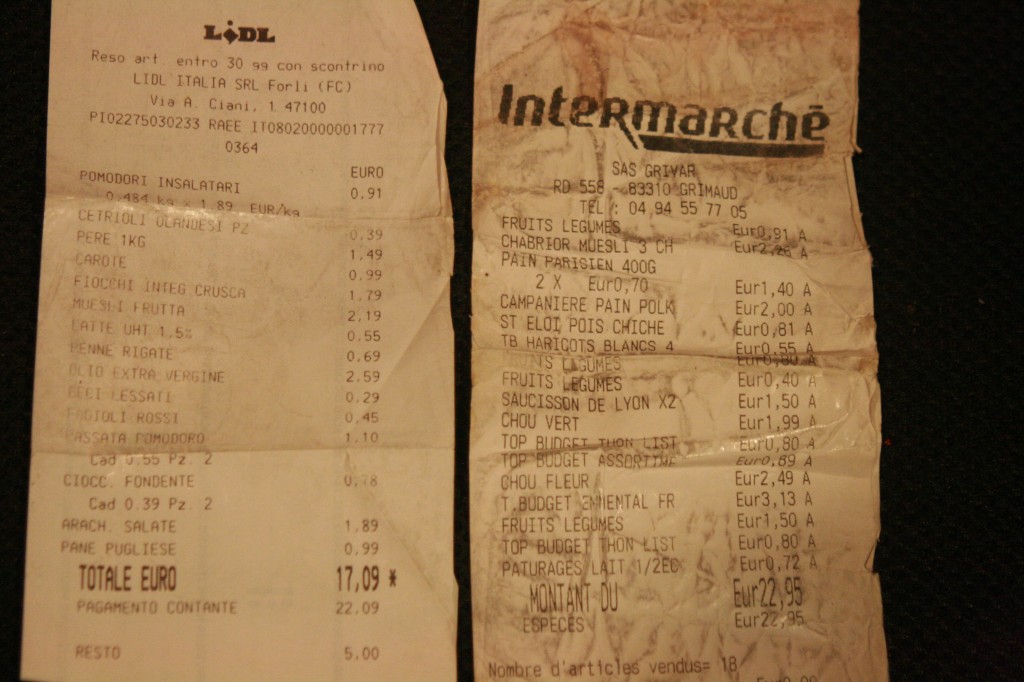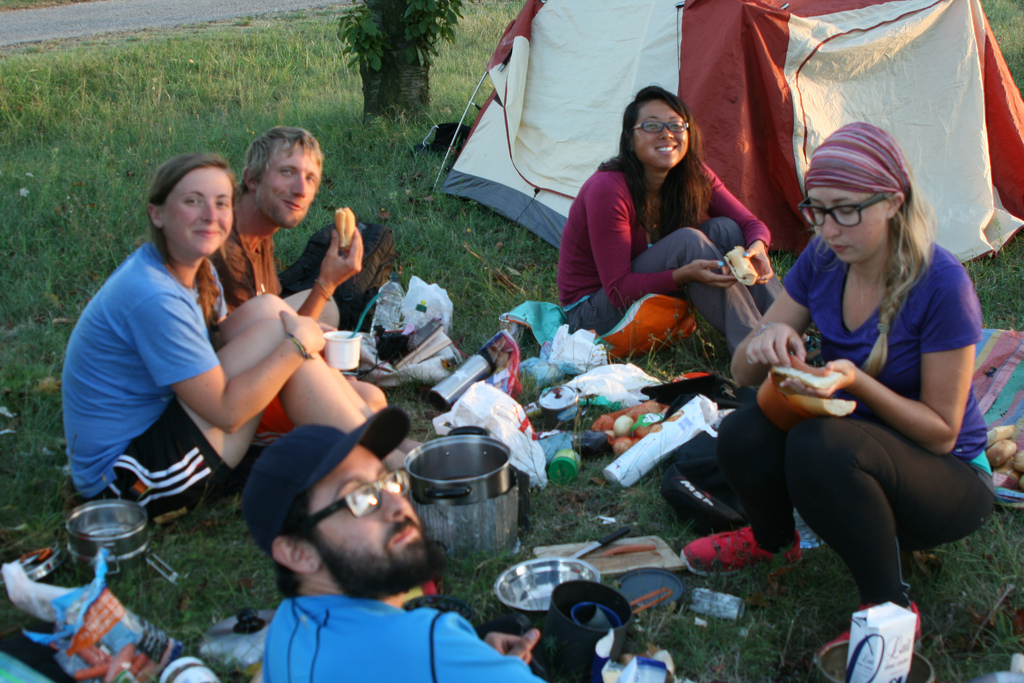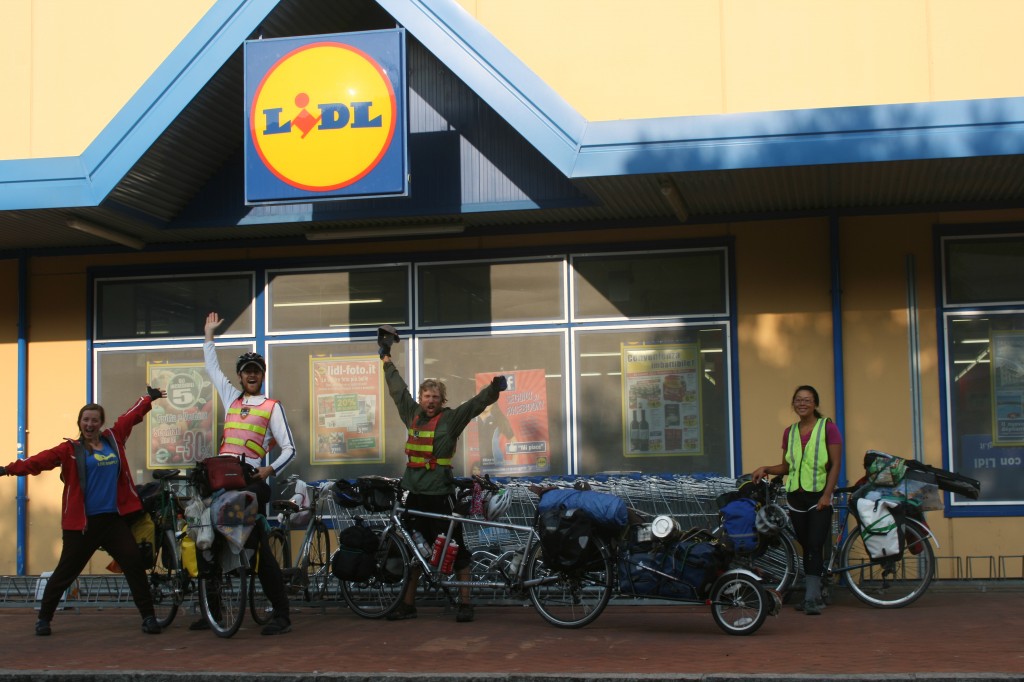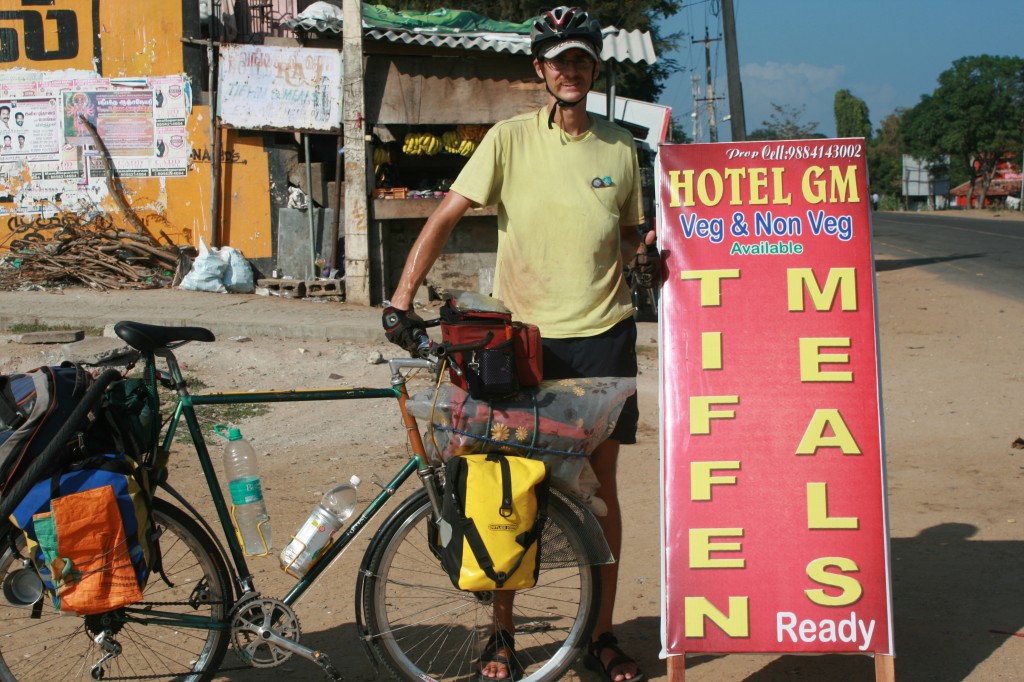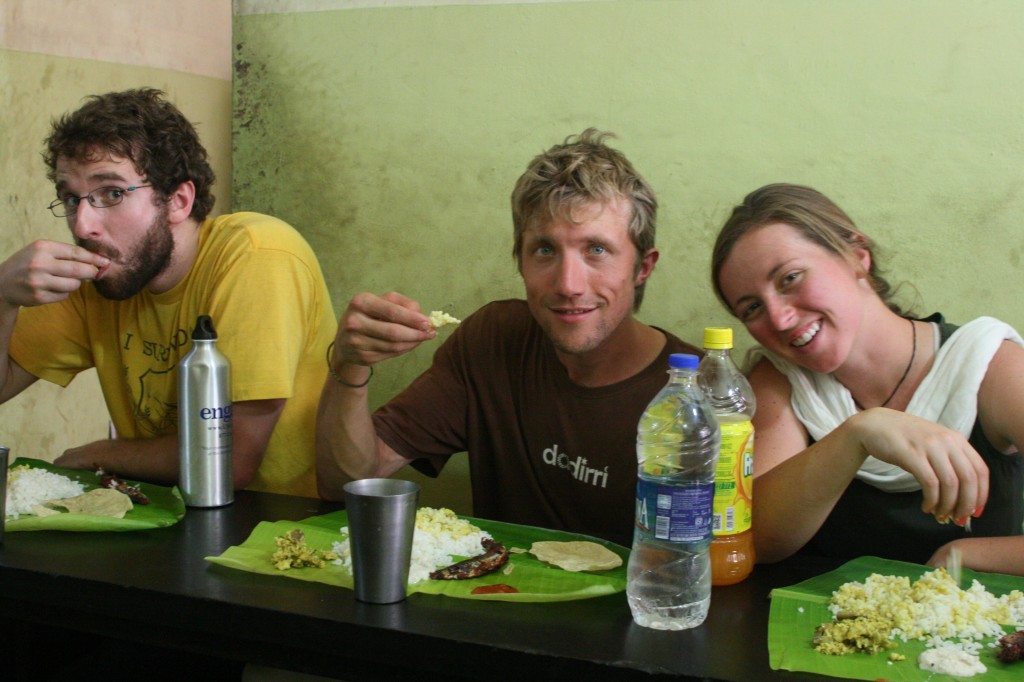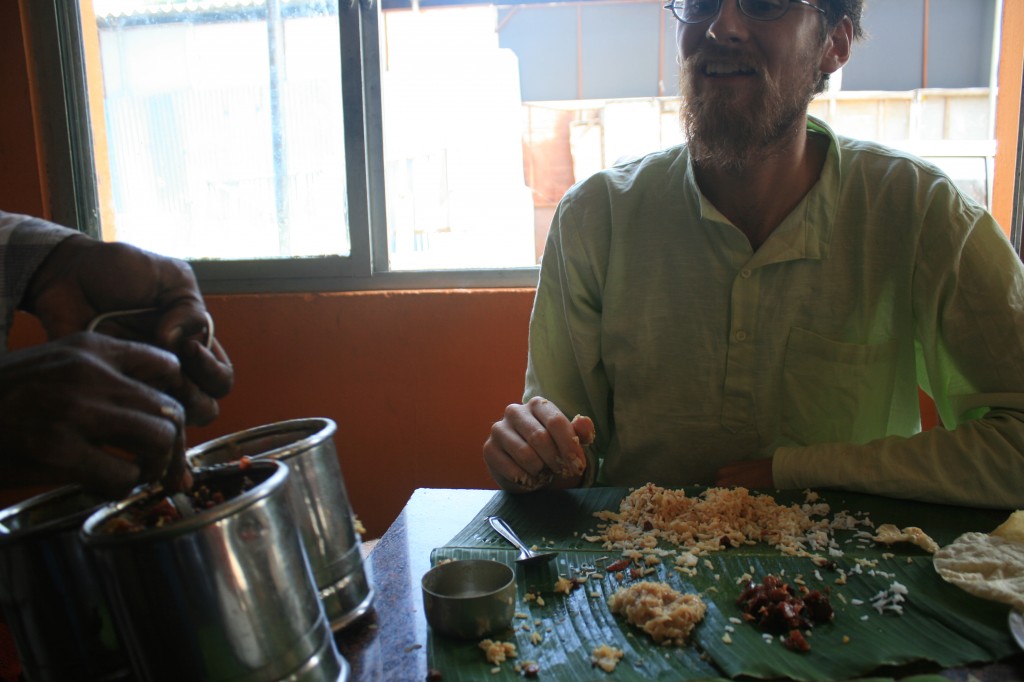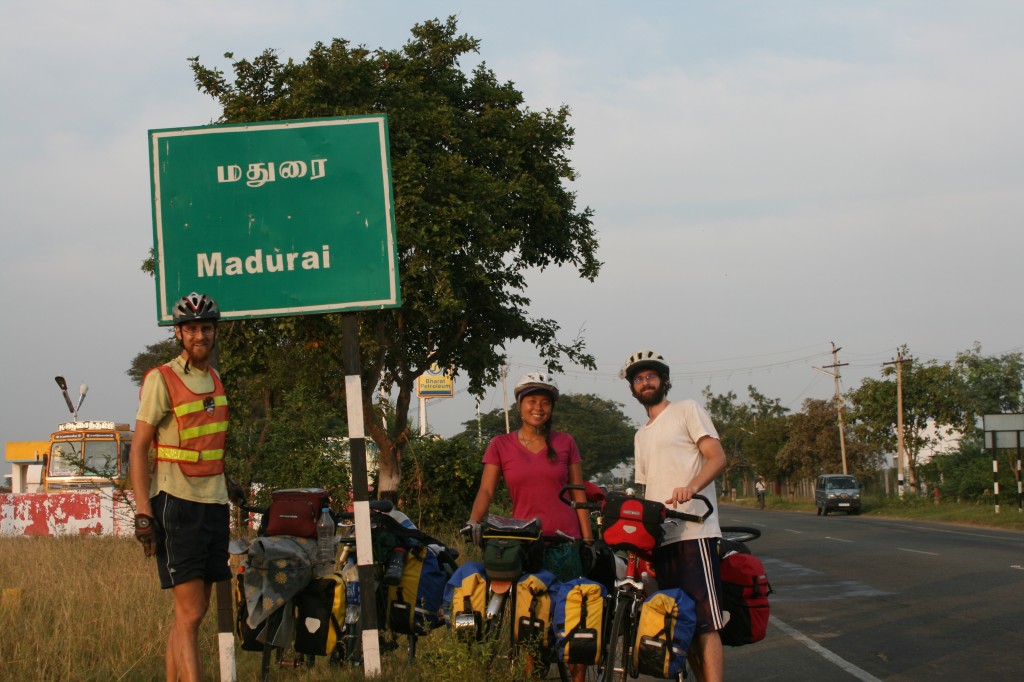February 2013
In This Blog:
1) Summary
2) The Details, our route day by day: Inle Lake to Bagan
3) FAQs for bicycle touring Myanmar
4) Our journey through photos
1) Summary
Myanmar bicycle touring – To go or not to go. Go! Myanmar was the highlight of this Germany to Thailand tour for me. Wonderfully friendly people and rural scenes out of another era.
Just be prepared for very rough roads, long days (80-100km), distances measured in miles, people and signs usually underestimating distances, the occasional forced move by local police to a neighboring town with an official foreigner hotel, unreliable maps (even Google), carrying most of your money in perfect condition US$ bills (20s and 50s best), and being with many middle aged European/American tourists in the popular touristy areas during peak seasons, now booming since 2012’s political reforms. Travel before 2012 was possible, but many chose to not go so their money would not support the Myanmar military government. Bicycle touring allows you a much better opportunity to distribute your tourist dollars to family-run businesses off the tourist track.
Two of us from FBR 2 (Steve and I) met up with fellow Minneapolis bike traveler, Patrick, (biked New Zealand fall 2012) to bicycle in Myanmar in February 2013. We found that there was little information out there besides a blog or two from a year before. This is my contribution to the Myanmar bicycle touring literature.
First, I will say that everything is changing very fast there now, especially regarding ATMs: As of fall 2012 only Mastercard was accepted at a very few ATMs. As of January 2013, Visa is now accepted. In February 2013 when we were there, a very few touristy towns had ATMs, but they were never open or on when we wanted them. The ATM at the airport was the only one we used successfully. So, you still need to bring in most of your money for your whole Myanmar leg in US$ cash, which has been the tradition in Myanmar for decades. It is safe.
Our ROUTE – Two Weeks, 5 biking days:
Inle Lake to Bagan, via Kalaw, Heho, Pindaya, Ywengan, Myittha (NOTE: no foreigner hotel in Myittha, stay in Kyaukse town 20km to the north), and Myingyan.
We asked Jasper and Uta, two WarmShowers.org members (the couch surfing site of bicycle touring) who live in Yangon, for recommended routes. Jasper recommended busing north and Uta suggested instead biking northwest from Yangon to hit mountains and ocean coast. In the end we followed Jasper’s suggestion to head north, which involved two bus rides and a mix of the two most popular tourist sites (Inle Lake and Bagan) as well as the road less traveled between the two in the beautiful and mountainous Shan State (where Inle Lake is located), which was fantastic. I would recommend spending more time biking there if you have it. He said biking north from Yangon would waste a lot of time (and it’s all flat in the valley corridor between Yangon and Mandalay). I would also suggest this route if you only have 2 weeks like we did. To avoid the buses, you might consider flying to Mandalay, though the three of us enjoyed wandering around Yangon’s busy downtown back streets (arranged in a grid) just watching all the activity (we did not go to Mandalay).
An Excerpt from Jasper’s e-mail:
I would recommend to take a bus to Kalaw, Shan State. That is pretty
elevated, cool and very nice. Cycle around the Shan hills, visit Inle lake
(touristy but still nice I guess) and from Inle cycle to Heho, Pinthaya (take
the small road north from Heho, don’t take the road from Aung Ban). From
Pinthaya you could go north a bit and down from the plateau in the lowlands
towards Mandalay. From there to Bagan, which is a must see. Then take a bus
back to Yangon from Bagan.
This route has pretty good accommodation option. Other areas are more
difficult especially if you only do 60 km day. Often you have to do 100-150
from one option to the next. Camping you can do but pitch your tent out of
sight and only after dark. You will not be arrested but police might want you
to move if they see you, meaning bikes in truck or something. A hassle anyway. If you want to avoid that hassle, ask for accommodation at a monastery, that is normally no problem.
However, if you really want to stay away from tourists in Inle Lake and Bagan, you may want to consider Uta’s route.
2) The Details, our route day by day: Inle Lake to Bagan
I missed biking through Myanmar on the first Fueled By Rice journey in 2008. We were hoping to bike across Myanmar from Thailand to India – the logical thing to do when looking at a world map and figuring out how to get from Bangkok to India – but country borders and the policies that govern them are often not so simple. A funny thing, borders: an imaginary line drawn to separate “us” and “them.”
So this time, I really wanted to make it to Burma. It still has that allure of the mystic and the road less traveled. But, there was always uncertainty when I told people along our route earlier in this journey: “We hope to bicycle through Burma,” we told people. It seemed difficult to get good, if any information. After finally talking to a Burmese tour agent in Bangkok in January 2013, we were convinced it would OK to go. And it was!
Route Details: Inle Lake to Bagan, via Kalaw, Heho, Pindaya, Ywengan, Myittha (NOTE: no foreigner hotel in Myittha, stay in Kyaukse town), and Myingyan. All but Myitta and Myingyan are in the mountains. We much preferred biking in the cooler Shan State mountains than the flat, hot, and dry Mandalay valley.
Flights from Bangkok to Yangon were the cheapest we found even though we were coming from India, US$250 at peak season in February (Chinese New Year), and as low as US$100 roundtrip. We flew Air Asia which has a brilliant straightforward and cheap pre-booking “sports equipment” by kg additional charge, only US$40 for the bike fee.
Night Bus Yangon to Kalaw (dropped off in Kalaw at 4am – got a room for 6 hours)
Yangon’s long distance “highway bus station” is far out of the city center, to the north around 25km, just a few km northeast of the Yangon airport, but certainly bikeable. The bus station itself is very confusing and we had to ask around to find our bus among many buses with many private companies. We took off our front wheels, handlebars, lowered our seats, and with the help of 5 Burmese, shoved them in the lower storage area. Our bikes made it just fine.

Yangon Highway Bus Station – a confusing mess
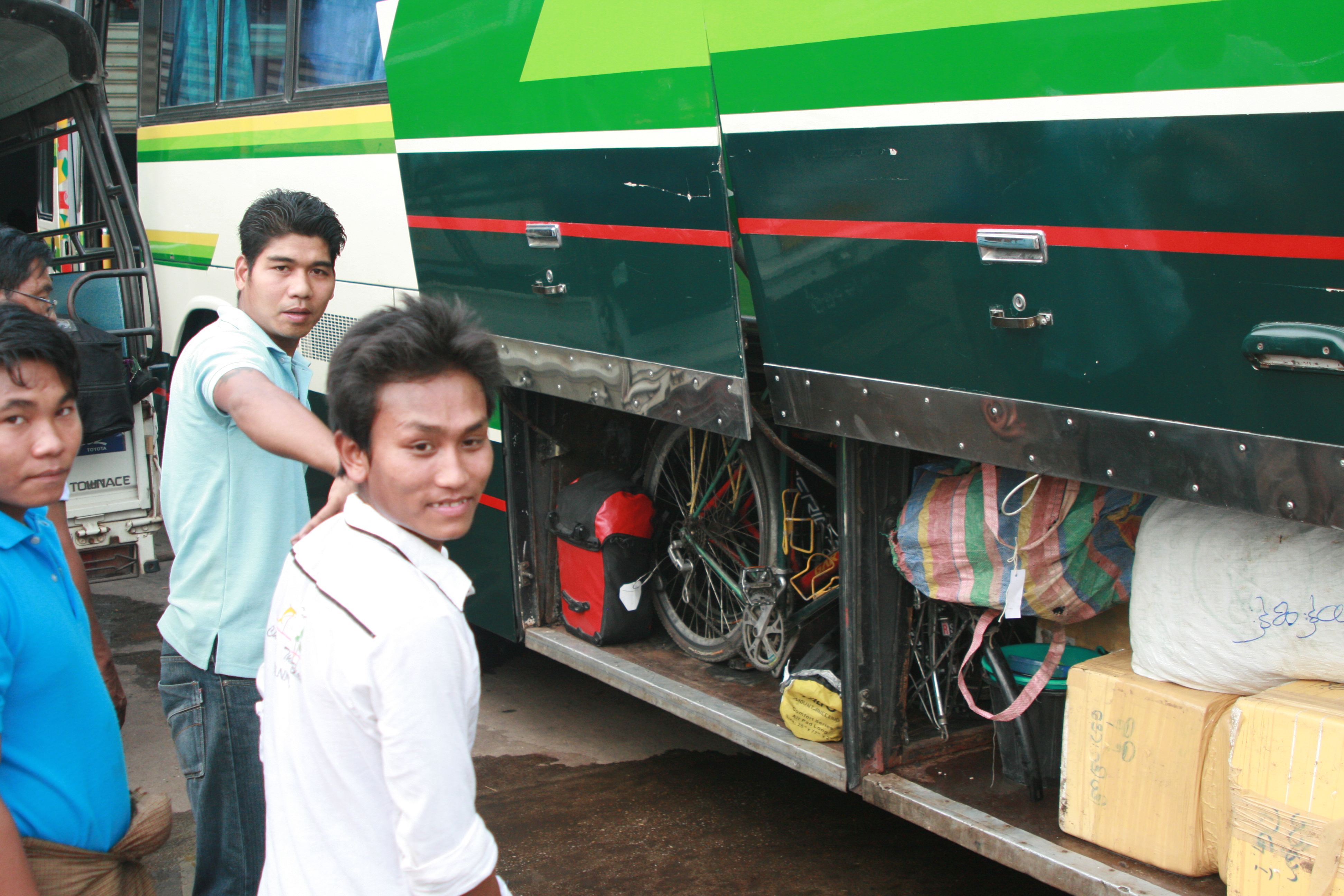
Yangon Bus Station – Stuffing our Bikes in the luggage compartment – They arrived safely.
Biking Day 1 – Kalaw – Inle Lake (Nyaungshe Town) 60km, relatively easy and smooth road (could bus all the way to Inle Lake on the same bus if you wanted)
When we arrived at the ticket gate to Inle Lake/Nyaungshe Town at 5pm, everyone said all the hotels were booked and we didn’t have a reservation. We biked around and asked at several places, and found at least three that had space for us and they were willing to bargain with us. We also asked at the Monastery, which would have been our preference, but the monk we spoke to told us that if we could not find a hotel, we could come back. Respecting his wishes in a very touristy town, we went out and chose the cheapest of the three we had found, which that night was the Gypsy Guest House for US$23.00 total for all three of us, not bad.
We stayed a day (two nights) in Inle Lake and finally chose to do the day-long touristy lake tour by boat of the villages (US$45), which ultimately is the reason everyone goes there. It was beautiful and worth it.
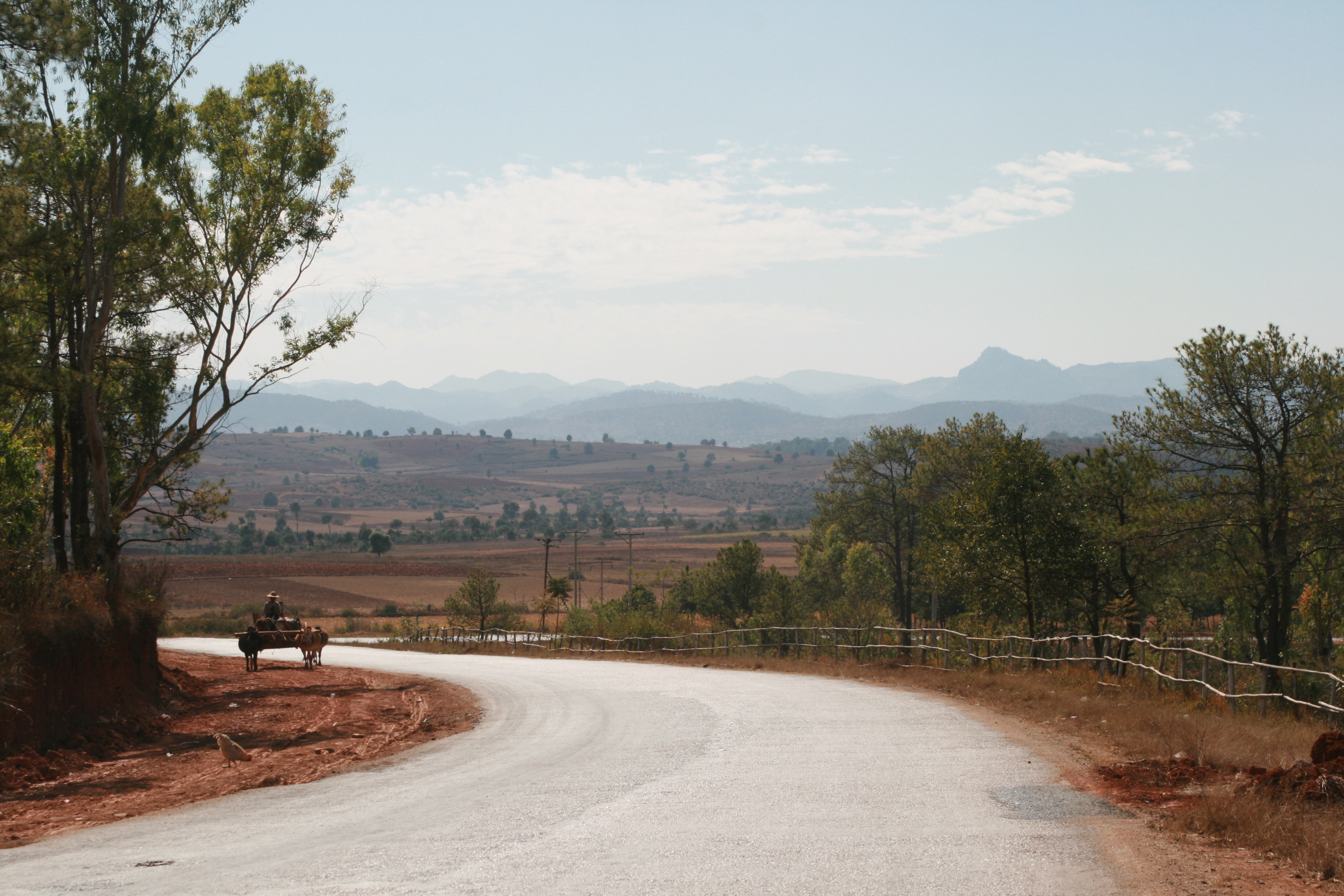
Day 1: Biking east from Kalau to Inle Lake (Nyaungshe town) – 60km

Day 1: Biking east from Kalau to Inle Lake (Nyaungshe town) – 60km
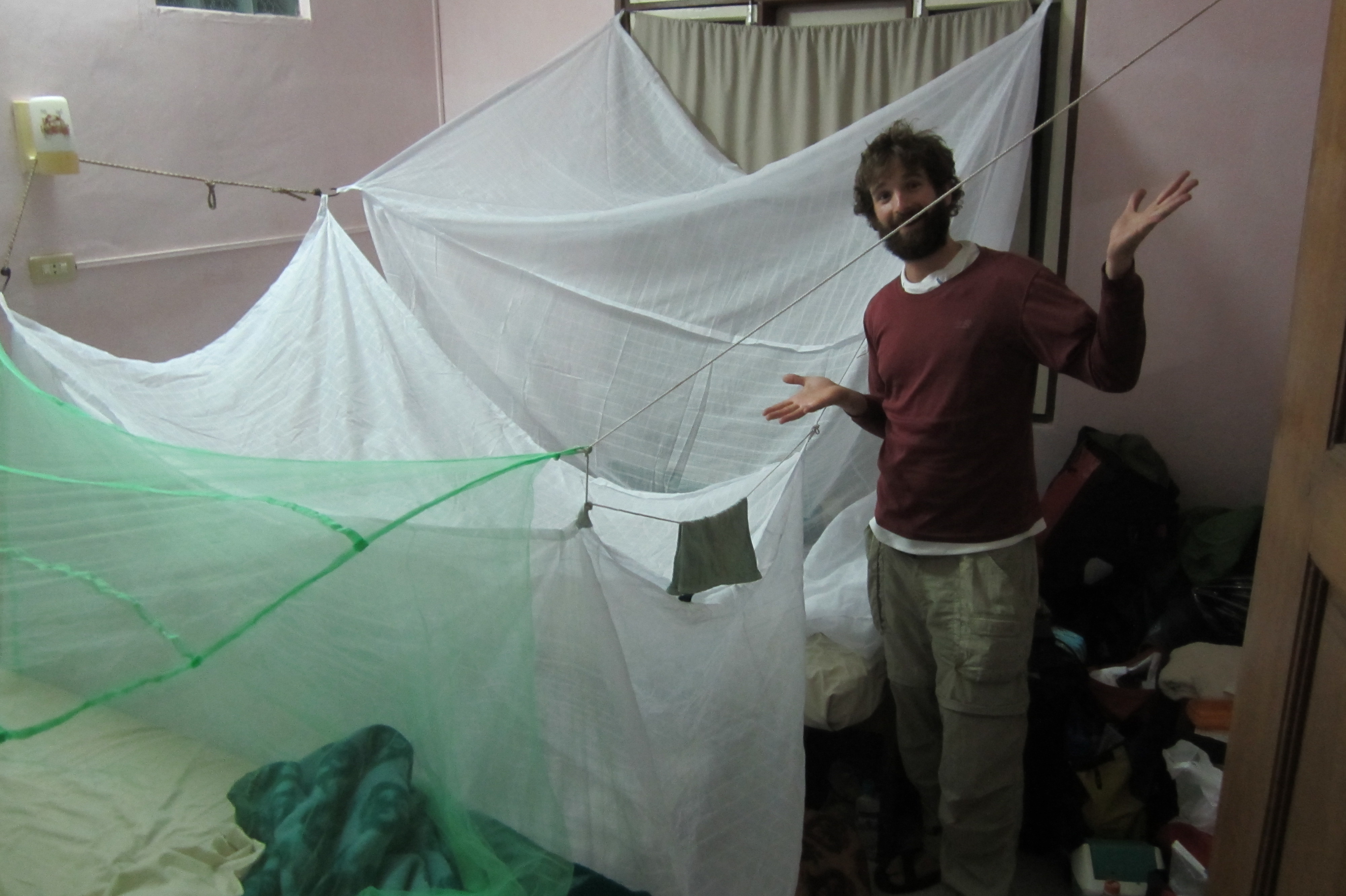
We used our mosquito nets at all hotels just to be sure. Our cheap room at Inle Lake.
Biking Day 2 – Inle Lake – Heho – Pindaya 80km (take small road north from Heho instead of larger road from AungBan for better scenery – ask for it in Heho)
A long day on a small road, but so great to off the beaten path, winding up and down hills through a handful of villages, amazing to see wheat harvesting by hand and plenty of two-wheeled ox carts. The road surface was good for 1/3 the time, and very bad, dirt/rock the other. We had about 10km added in the last 1/4 of the day due to a road construction detour. We were getting worried around 4pm when people told us different times and distances to Pindaya, all longer than we thought. But we made it in around 6pm just after sunset and found a nice hotel for US$10/person with hot water showers, which was very welcomed. The air was quite cool in the elevation at night, making camping impossible without a decent sleeping bag (which we left in Bangkok thinking it’d be too hot to make it worthwhile).
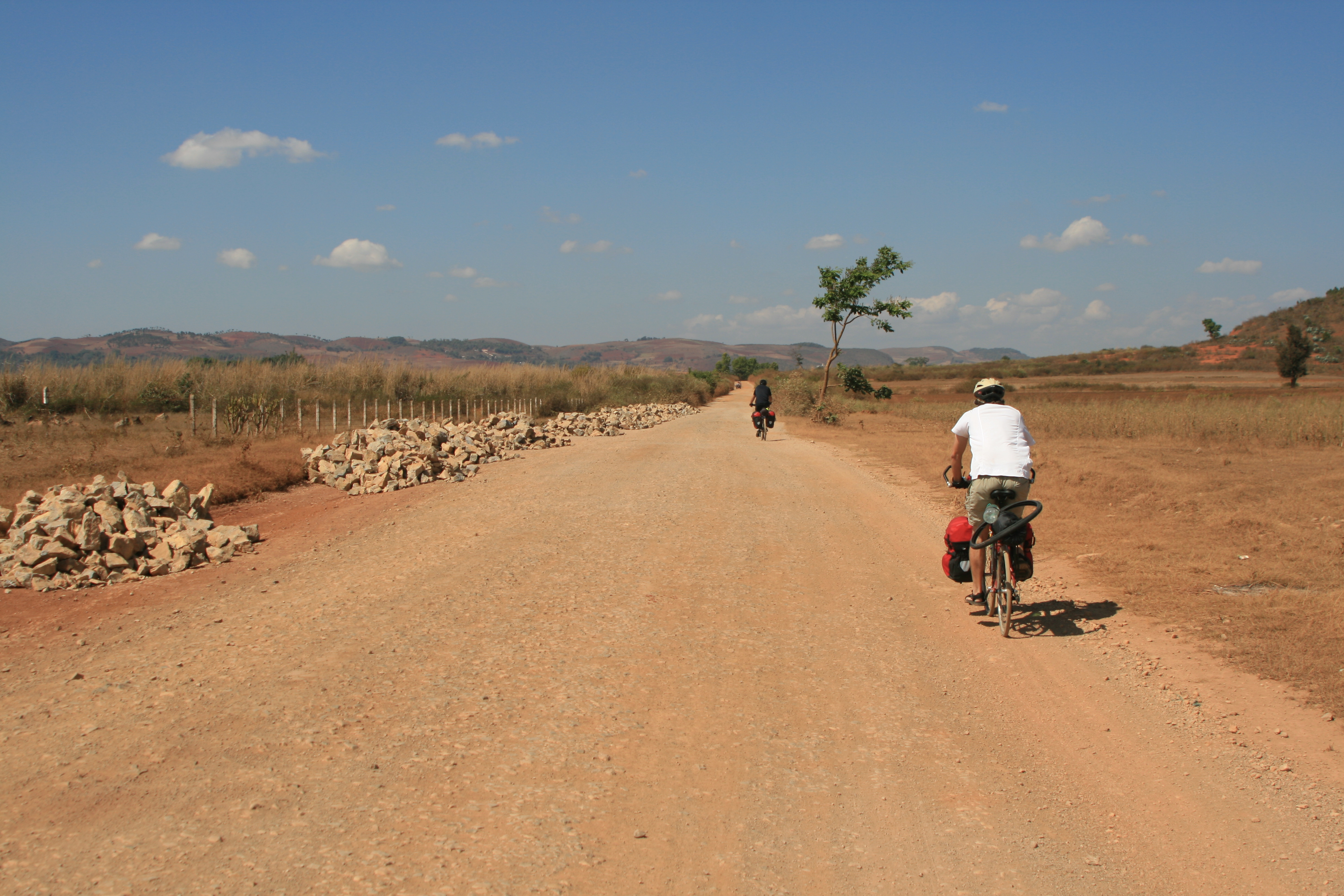 Day two biking the small road from Heho to Pinyada
Day two biking the small road from Heho to Pinyada
Day 2 – Heho – Pindaya – Harvesting wheat in a village
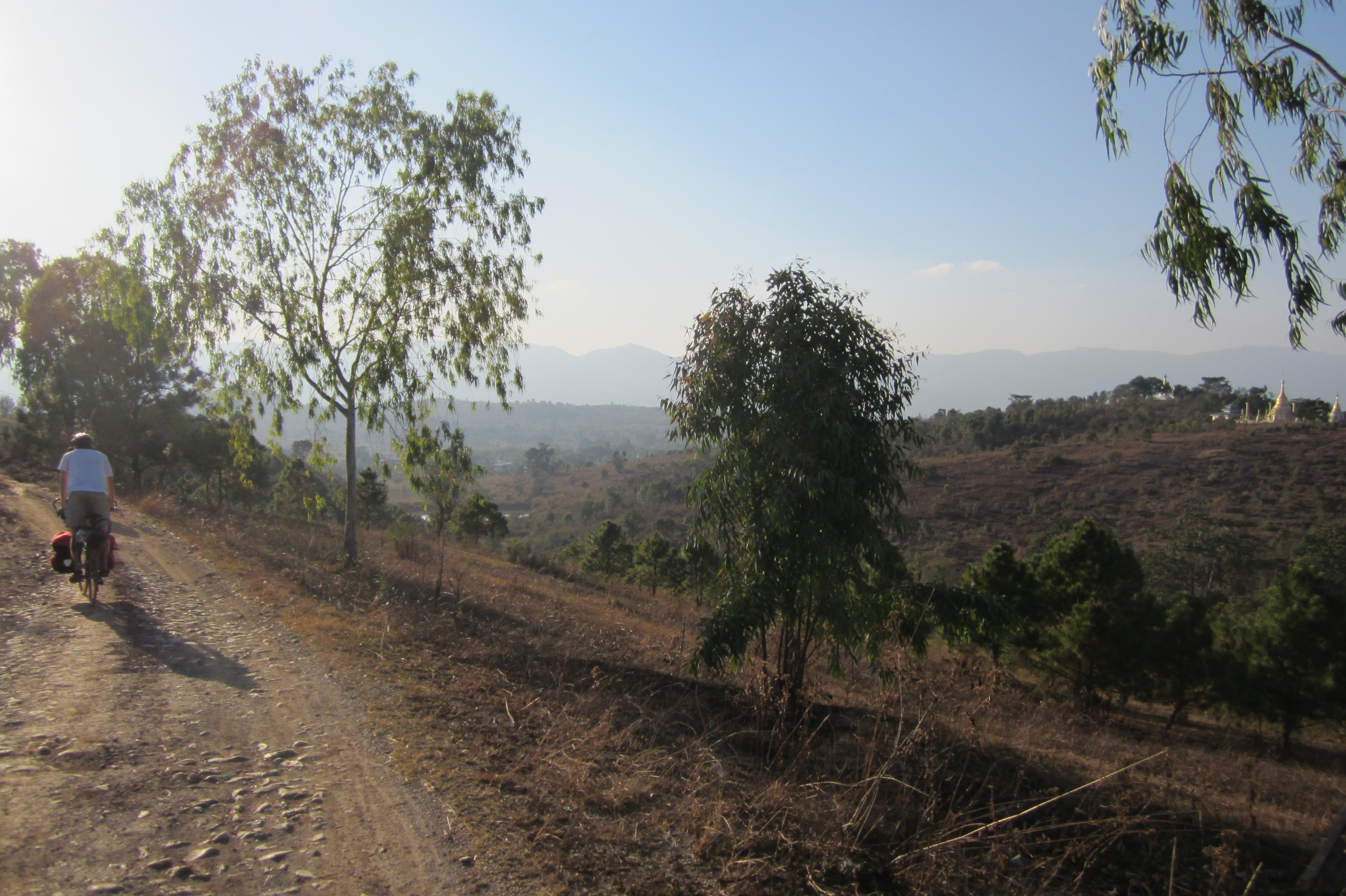
Biking the last 15km into Pindaya on our construction detour

Our room in Pindaya – very nice, hot water which felt good in the evening cold of the mountains – best value
Biking Day 3 – Pindaya – Ywengan 80km, 7.5 hrs, rough road; contrary to my map, had to go 20km south first before we could go northwest to Ywengan on the 411 road.
Got a late start (12:30pm) after seeing the famous Buddist statue cave in Pindaya. Arrived after dark. Ywengan is a small town. We found a simple guesthouse (Khansan Guesthouse) for US$10 for all three of us, two rooms, cold water bath outside. More Beautiful hilly countryside.
One of the few well-signed intersections in Myanmar – 20km south of Pindaya before we could go northwest to Ywengan on the 411 road (my paper map bought in Yangon did not have this 20km south bit.) Note: distances on sign in miles, standard in Myanmar.
Day 3 – Pindaya – Ywengan 411 road
Biking Day 4 – Yewengan – Myittha 85km biked mostly down mountains (45km) on a very rough road; then 50 mile pick-up truck ride west to Myingyan (US$70 total).
NOTE: Myittha does not have a foreigner hotel, but Kyaukse, 20km north, does.
Very beautiful mountain climb then a HUGE decent into the Mandalay valley on a terrible road surface, so we had to go slow despite the huge drop in elevation. There is a flat 10-15km before the “T” intersection with north-south Highway 1.

Yewengan to Myittha – Lunch stop mid-decent
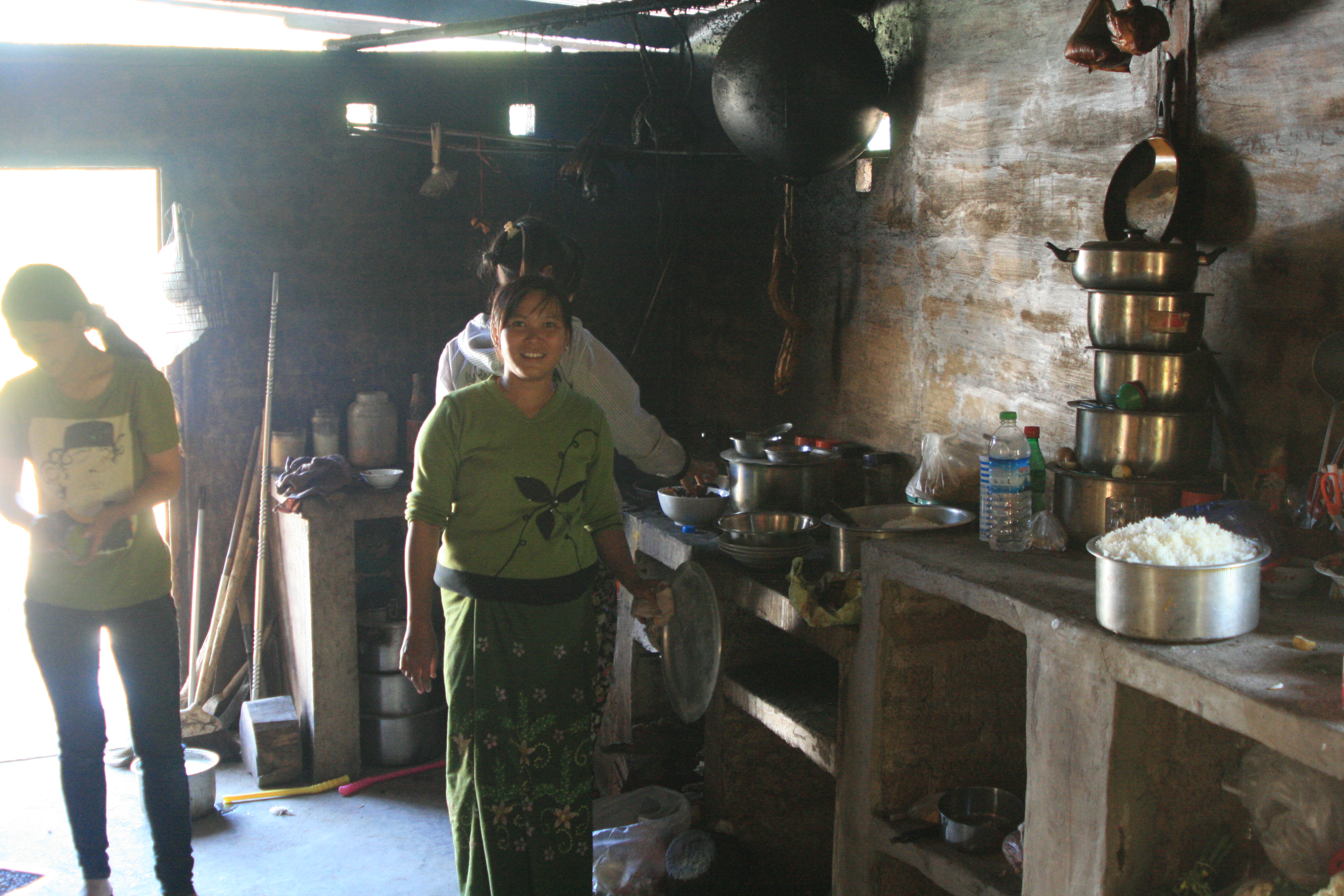
Yewengan to Myittha – Lunch stop cooks in the kitchen
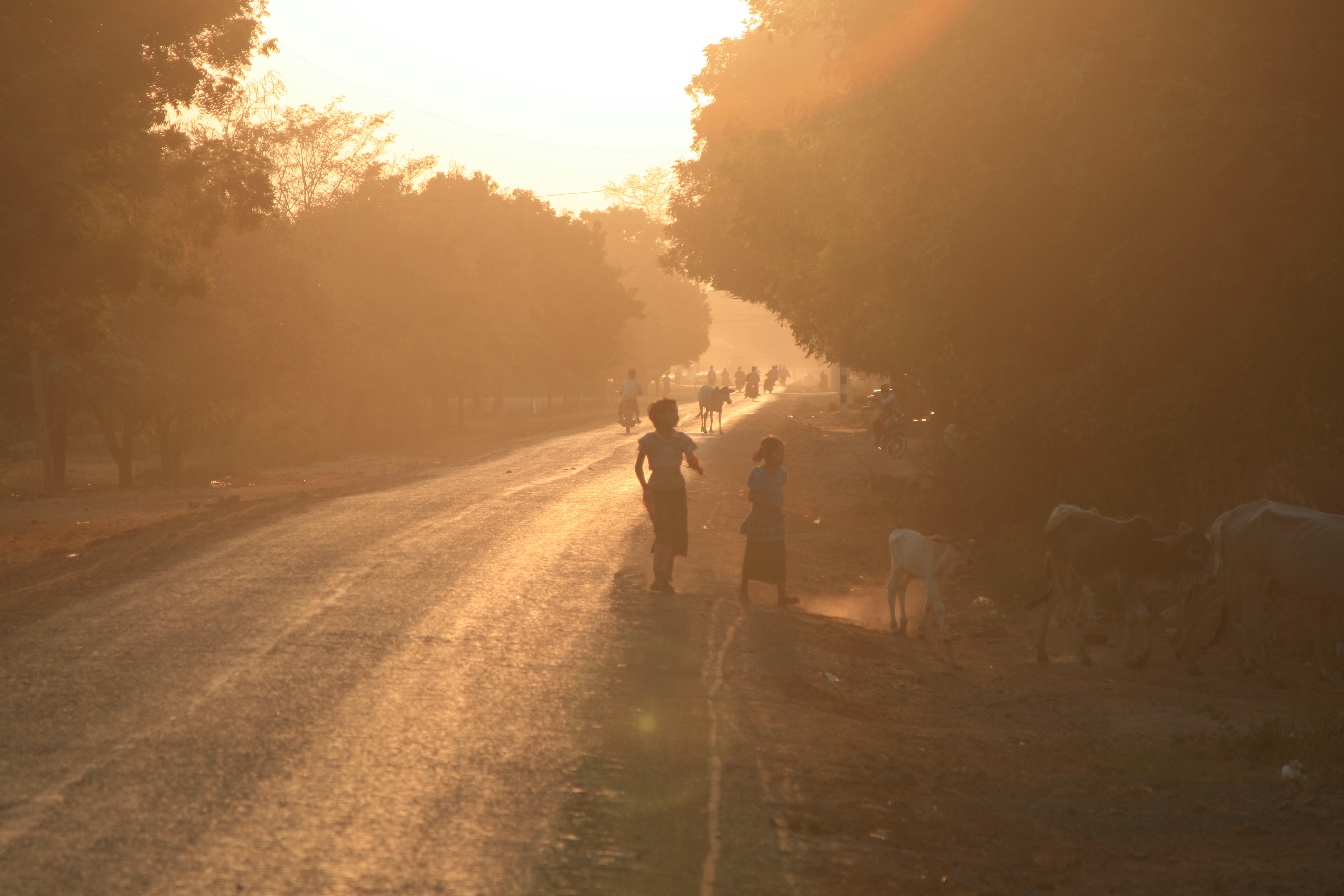
Yewengan to Myittha – The 15km flat heading west to the “T” intersection with the main north-south Hwy 1.
The Police kicked us out of Myittha town at 7pm after a very nice gas station family offered to host us (“if the government gave permission” which they did not). The family was extremely welcoming and generous, giving us seats, water, and snacks while we waited for the police. We definitely could have camped if we hadn’t stopped to ask about a hotel at the gas station, at which point, we were being taken care of by that family that followed the rules and couldn’t respectfully leave. Since it was after dark, the police suggested we hire a pickup truck to go 20km north to Kyaukse, but since that was the opposite direction we wanted to go and Steve wasn’t feeling very good, we opted to pay more and buy more time in Bagan and went the 50 miles west to Myingyan for US$70, a two hour journey. Upon our asking, the police escorted us to a restaurant where we ate with the gas station would-be-host. They found the pick-up truck, and we bargained the price. Even though the ride was on National Highway 2, it seemed more like a back road, and was similarly rough.
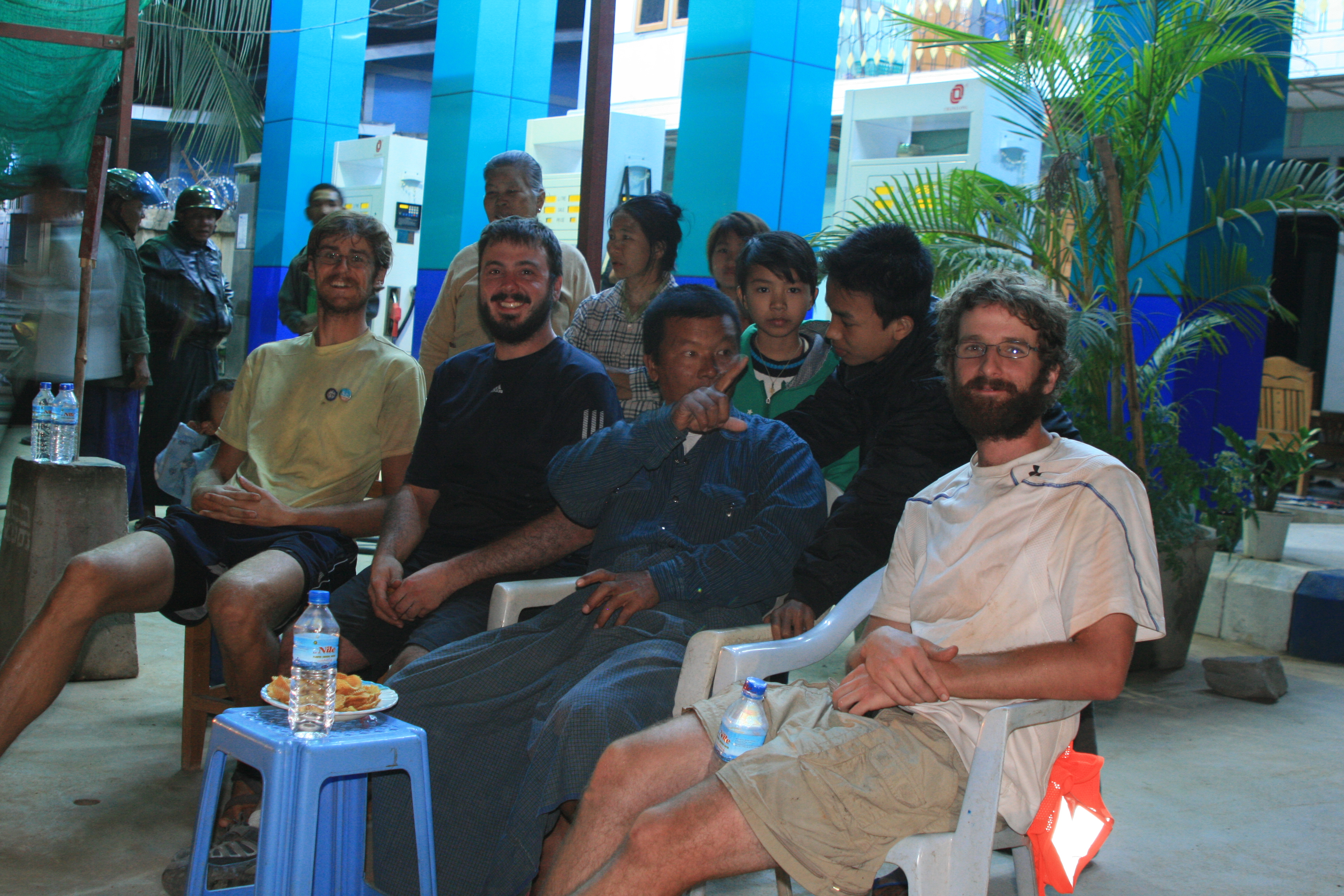
Myittha – We arrived after dark again on this day, to a town large enough to have a hotel allowed to host foreigners, so we thought. On the edge of town, we stopped at this gas station to ask if there was a guesthouse we could stay at and they said no, but then promptly invited us to stay at their house, but first, “we must ask the government.” The police said no. But they warmly welcomed us and gave us water and snacks while we were waiting for the police.
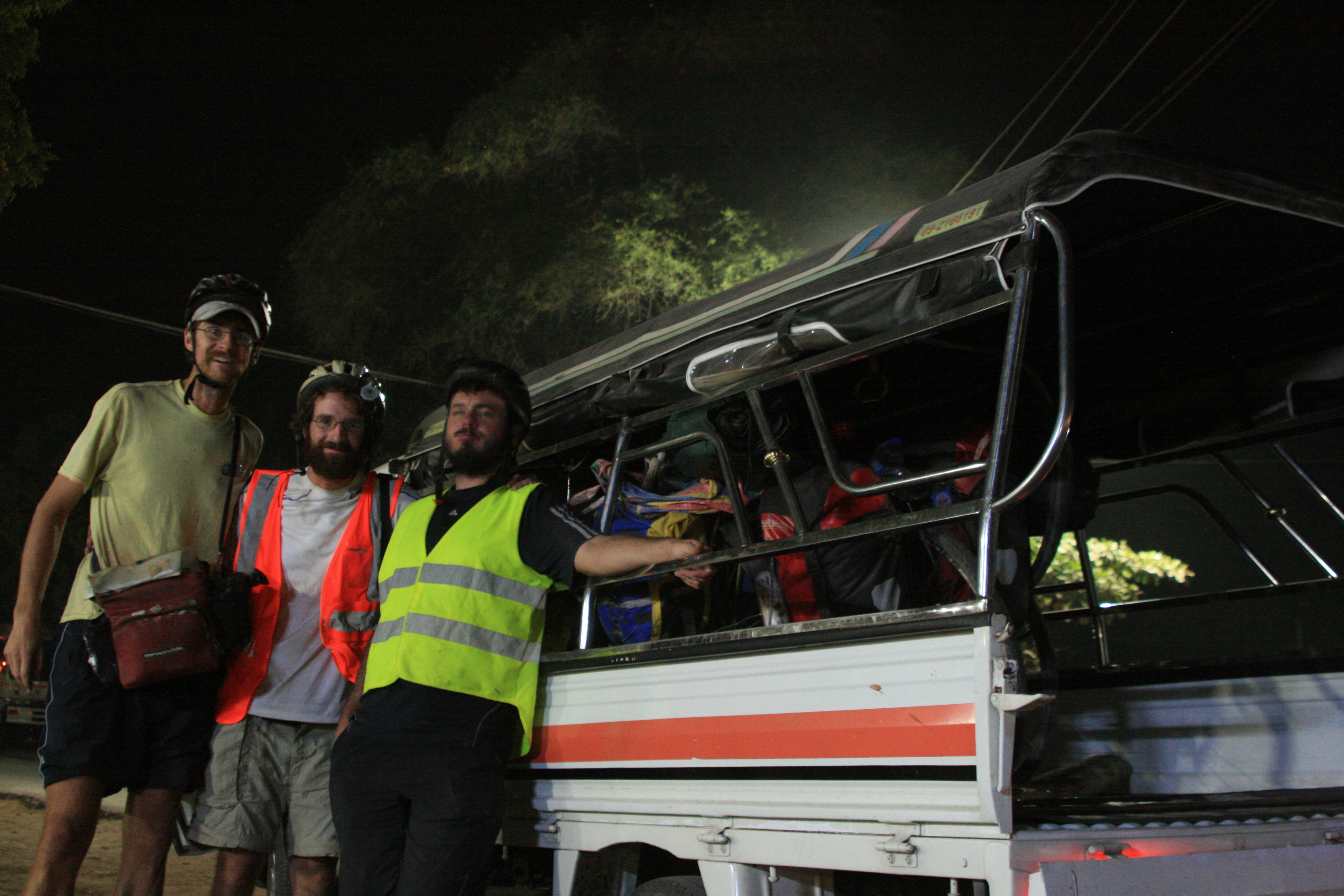
Myittha – we were forced to hire a pickup truck to drive us to a town with a foreigner hotel by the local policy (a common experience for bicycle travelers in Myanmar). Although Kyaukse town could have taken us, only 16 miles away, since it was in the opposite direction (east) of where we were headed, we opted to be driven 50 miles west to Myingyan to have more time in Bagan. The cost for this ride was US$70 for the three of us.
My biggest observation and realization on this bike tour came to me today:
Deforestation is the most critical environmental issue facing us as a global society. I’ve been reading Collapse by Jared Diamond (Guns, Germs, and Steel author) who also emphasizes how deforestation has often led to a slew of environmental and agricultural catastrophes leading to societal collapses in human history, not to mention all the other species that live in forests. Then, on today’s ride, mass clear-cut deforestation was very clear as we descended down into the Mandalay valley. Mountains as far as we could see had all been clear-cut at the same time a few years earlier, now comprising only scraggly and sickly-looking trees. Every once in a while we would pass a large jungle tree right along the road that had been spared. I witnessed similar mass jungle destruction in northern Cambodia on our first FBR journey in 2008 that was so recently cut and sold to China that the remnants were still smoldering and smoking along the brand new Chinese-built road running from southern Laos to Pehnom Pehn.
I am now convinced that Forests are our most important and precious resource that must be aggressively preserved and replanted to avoid environmental disaster, climate change, drought, erosion, agricultural failure, species extinction, and human extinction. SAVE THE FORESTS!!!
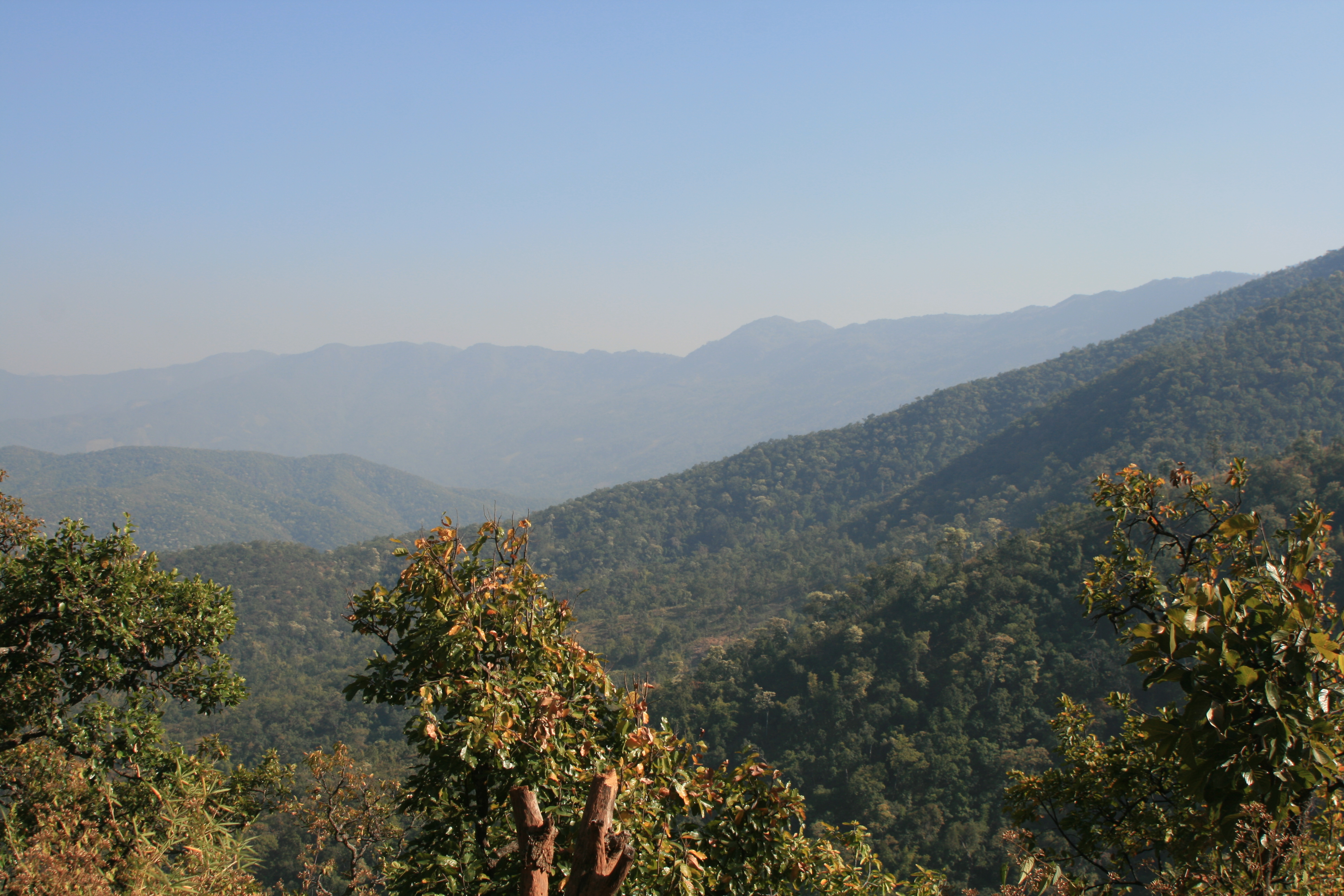
As we descended into the Mandalay valley, clear cut deforestation became brutally apparent. This is the normal forest before we hit the clear cut area.
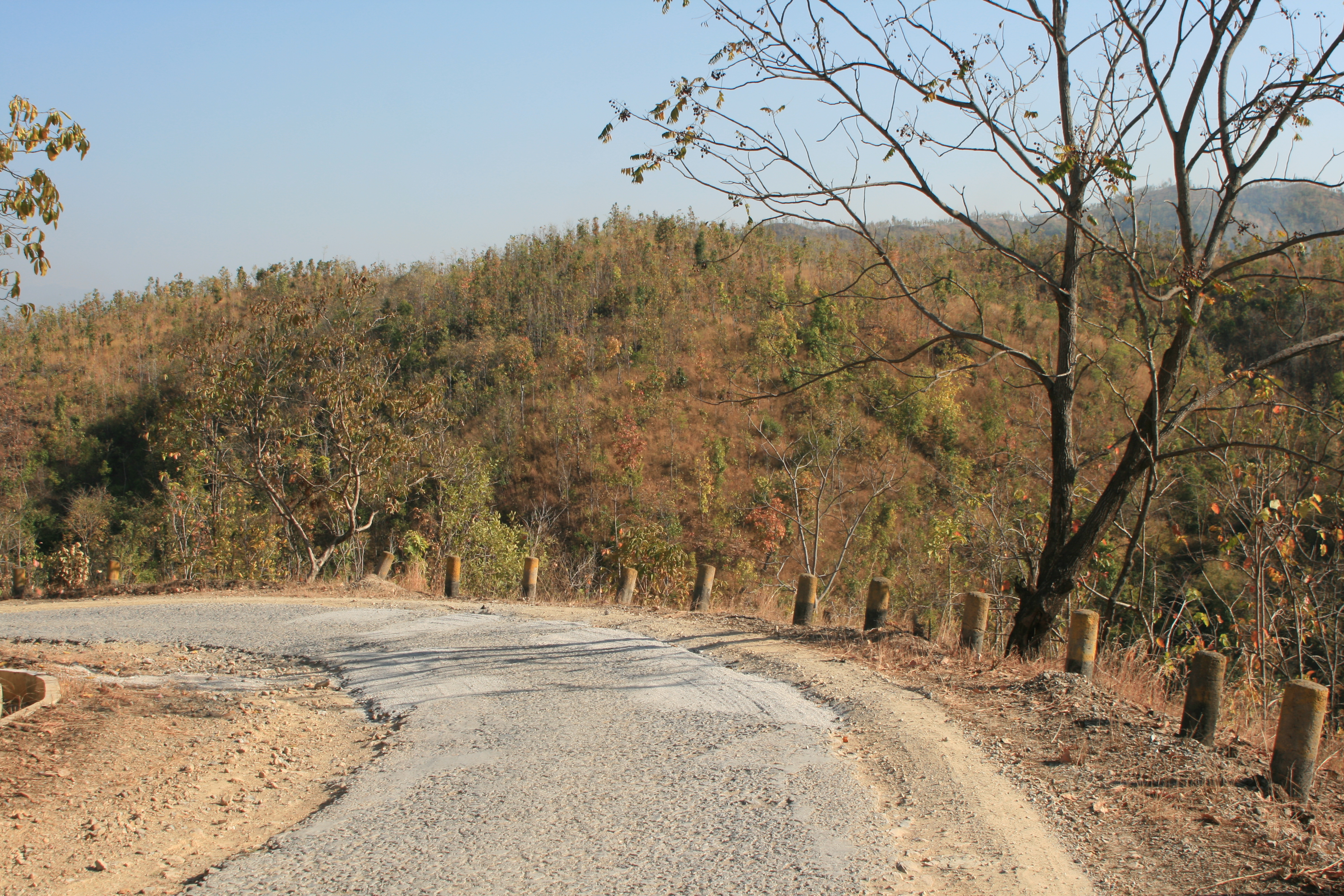
The clear cut forest attempting to recover with scraggly trees from deforestation
Erosion resulting from deforestation
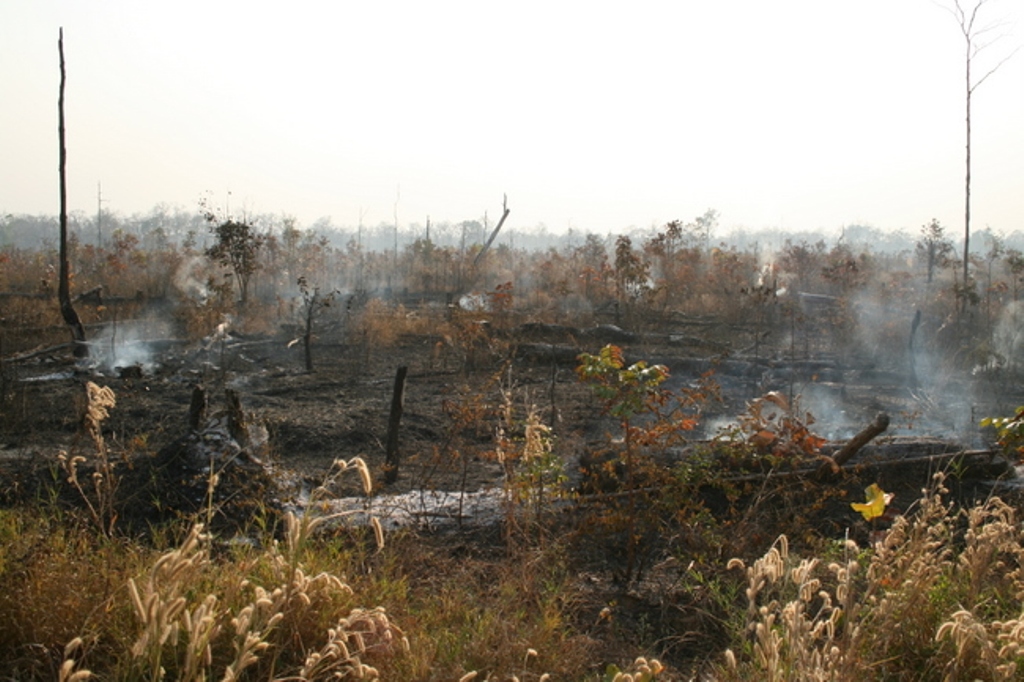
Northern Cambodia on the main north-south Hwy, Feb 2008 (Fueled By Rice 1st Tour) – Clear Cut Jungle sold to China the local residents told us – China built the new road from southern Laos heading south into Cambodia
Biking Day 5 – Myingyan – Bagan 50-60km, flat, but included the worst/roughest road stretch of the trip – National Highway 2 under construction just outside of Myingyan for 15 km or so.
From my journal:
“Right now I’m waiting on the side of a very rough, under construction patch of National Hwy 2 just out of Myingyan city on the way west to Bagan. Patrick just tacoed his front wheel by turning too quickly out of a dirt rut to avoid an on-coming motorcycle. The dirt track is next to the road since the under-construction rocky road surface is so terrible. Its funny to me that after all the incredibly rough back roads we’ve ridden 80-90km/day in the last four days, it’s this smooth but rutted dirt track that broke one of our wheels. Steve is not here because his knee hurt this morning, so he took a bus to Bagan (Nyeng-U town, the backpacker town of Bangan), where Patrick and I will meet Steve around 4pm..
A nice woman on a motorbike stopped by Patrick and I to see if we needed help. She suggested Patrick ride in on the back of a nearby young man’s motorbike back to town to get a new wheel. So here I am waiting in a shady highway ditch, though thankfully the road has little traffic, mostly motorbikes.
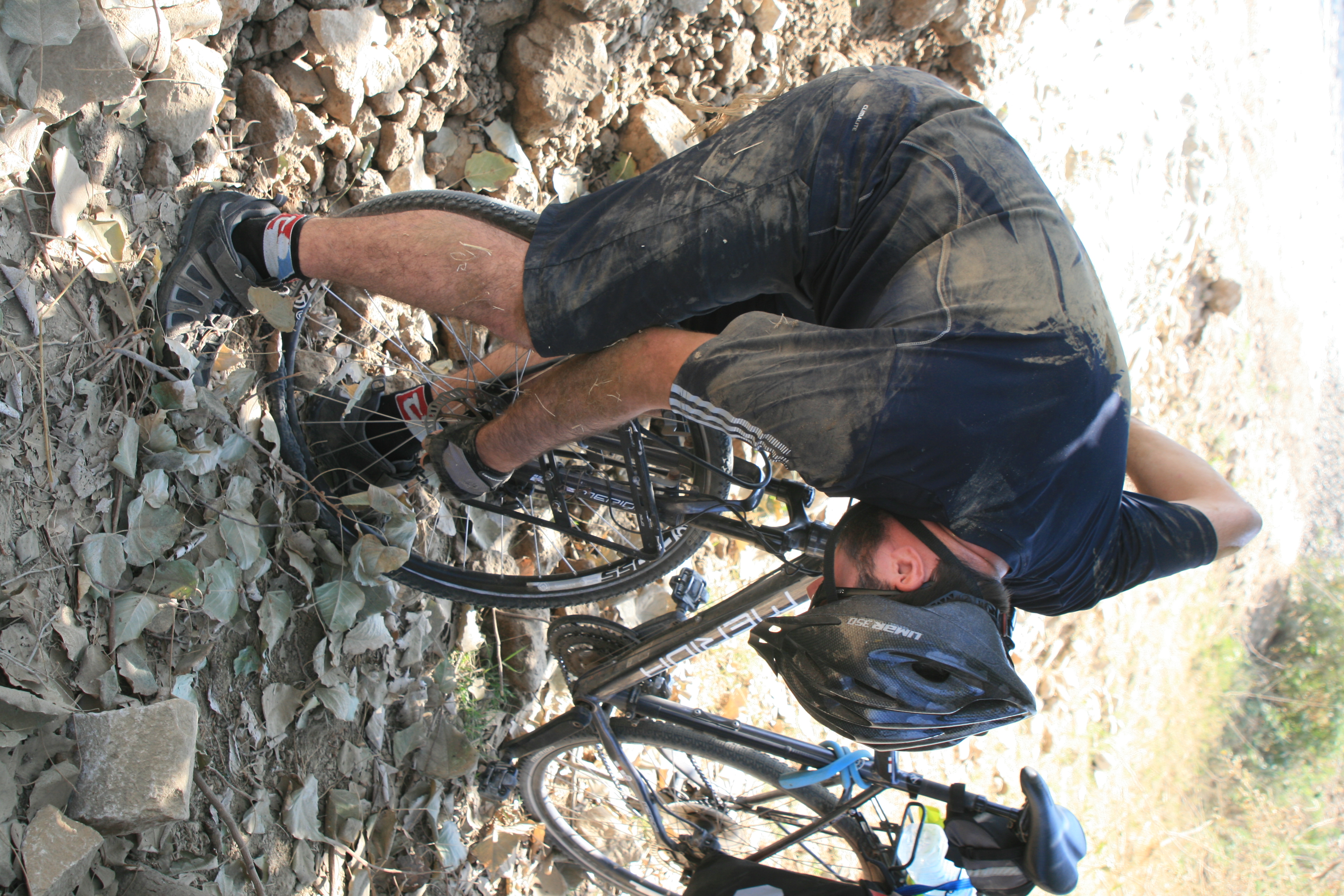
Myingyan to Bagan on Hwy 2 (final biking day) – Patrick tacoed his front wheel in a rutted side path next to the worst road yet, large rock awaiting resurfacing. Luckily, his hip was only bruised.
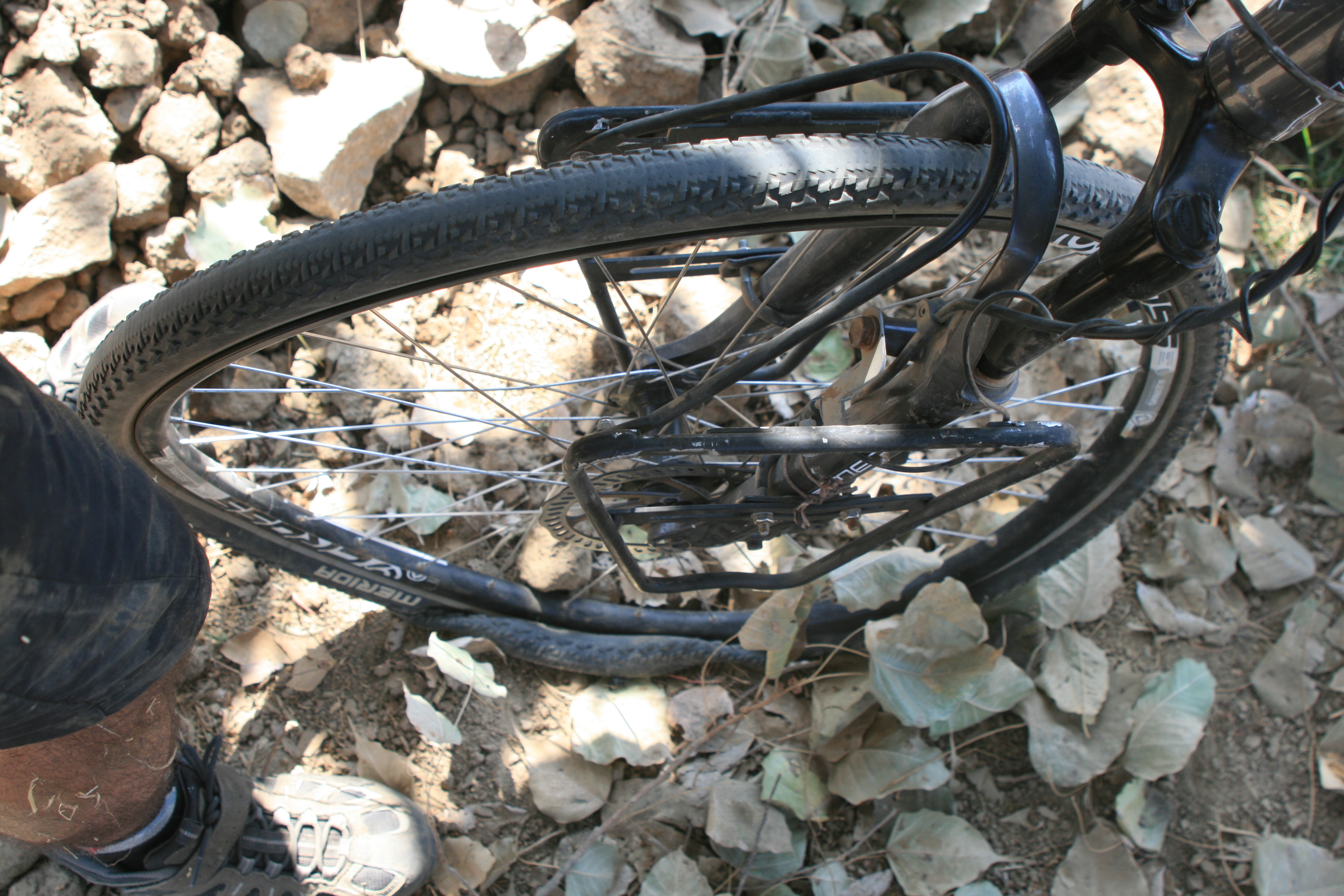
Patrick’s tacoed front wheel on the roughest stretch of road we found – Hwy 2, east of Bagan

Myingyan to Bagan on Hwy 2 (final biking day) – The toughest road in Myanmar – Patrick tacoed his front wheel. As if that wasn’t enough, both Patrick and Peter got multiple flat tires in a 2km stretch before we hopped a truck to get past the road work.
Roads: It seems all the road resurfacing crews will never be able to get most of Myanmar’s roads well surfaced at the same time. The mixed gender crews, often teenagers and 20 somethings, break larger stone into smaller stone by hand using sledge hammers and the women are placing the base layer of larger stones by hand. They then apply heated black oil to a smaller layer of stones using hand-carried buckets. Also, the road repair crews seem to be completely randomly placed along the roads, and only are repairing short distances, with bad/destroyed surfaced often both before and after where the crew is working. So, the quality of every road we rode varied greatly every several km, reflecting a long pattern of patchy road repair.”
Road Repair Crew
Two hours later, Patrick returned on the back of a motorbike with his same front wheel repaired! After asking around, they found a bike repair man in a back alley who simply hammered his wheel back into shape. Ha! Wheel repaired though, we didn’t go 2km and Patrick had a flat tire. 300 meters further and I had a flat. Another 500 meters, Patrick had another flat. Ridiculous! There were thorns in the side dirt path, and the road surface was too rough to ride. By now it was nearly 4pm, so we flagged down a truck and got a lift for 25km or so to the driver’s cousin’s roadside restaurant, where we ate a very late lunch. It also got us past the road construction. The rest of our ride was smooth, but we didn’t arrive until 2 hours after dark at 8pm. Luckily, Steve had left a note with the road gate guards as we entered the Bagan area that told us at which guesthouse to find him.

Myingyan to Bagan on Hwy 2 (final biking day) – The toughest road in Myanmar, large rock awaiting resurfacing.
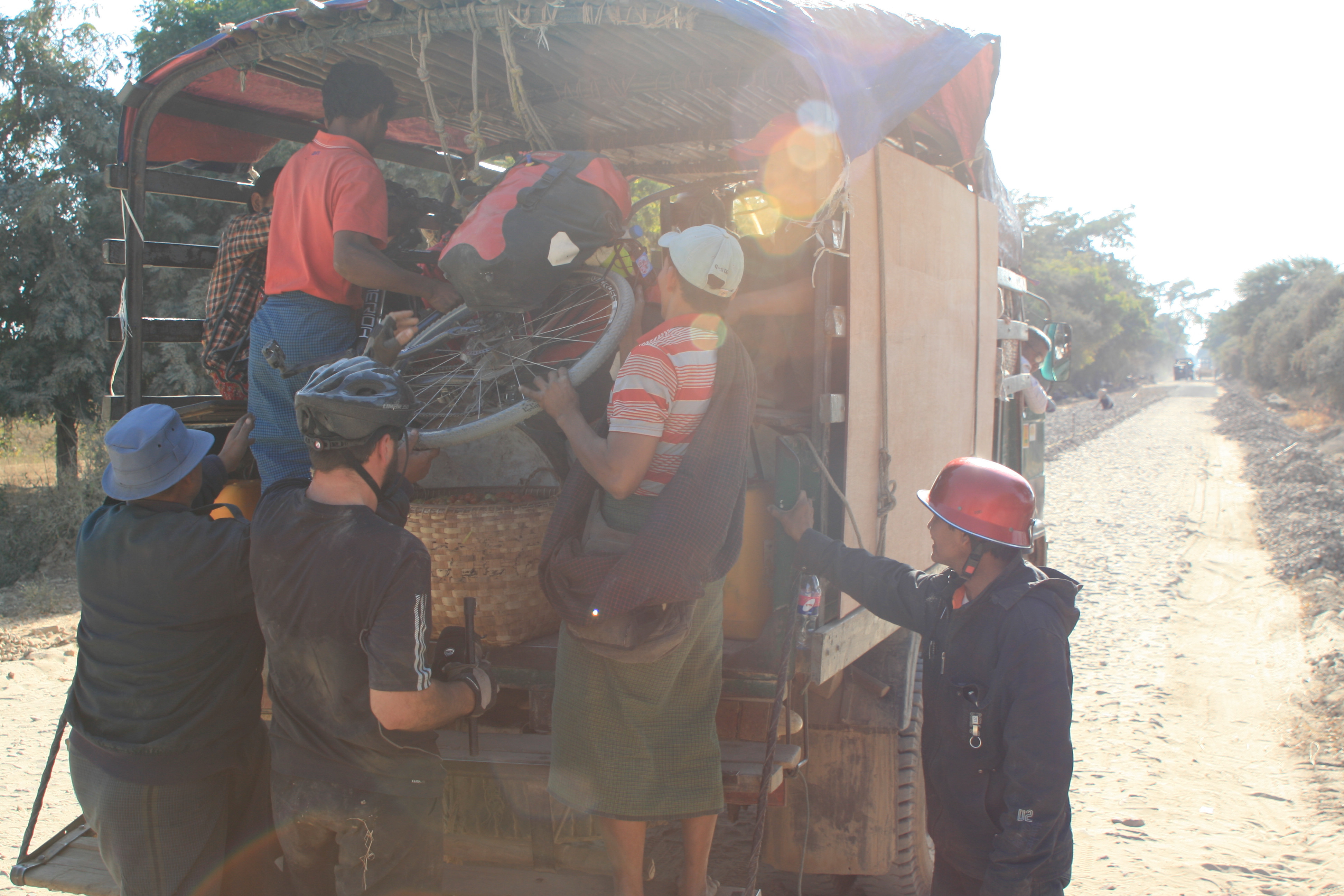
Myingyan to Bagan on Hwy 2 (final biking day) – Hopping the truck.
In Bagan, we met up with my good Burmese friend, Soe Soe, whom I met at the University of Minnesota in 2010 during my masters study there. He was in the excellent Humphrey Fellows program that brings movers and shakers from around the world to study at US universities. A character with a lot of enthusiasm and never ending interesting stories, he was an absolutely fantastic and generous host while we were in Bagan, including treating us to an amazing dinner and show at the Nanda Restaurant, where we otherwise would never have gone due to our cheap budget. Thanks for the hospitality and keep up the good work!
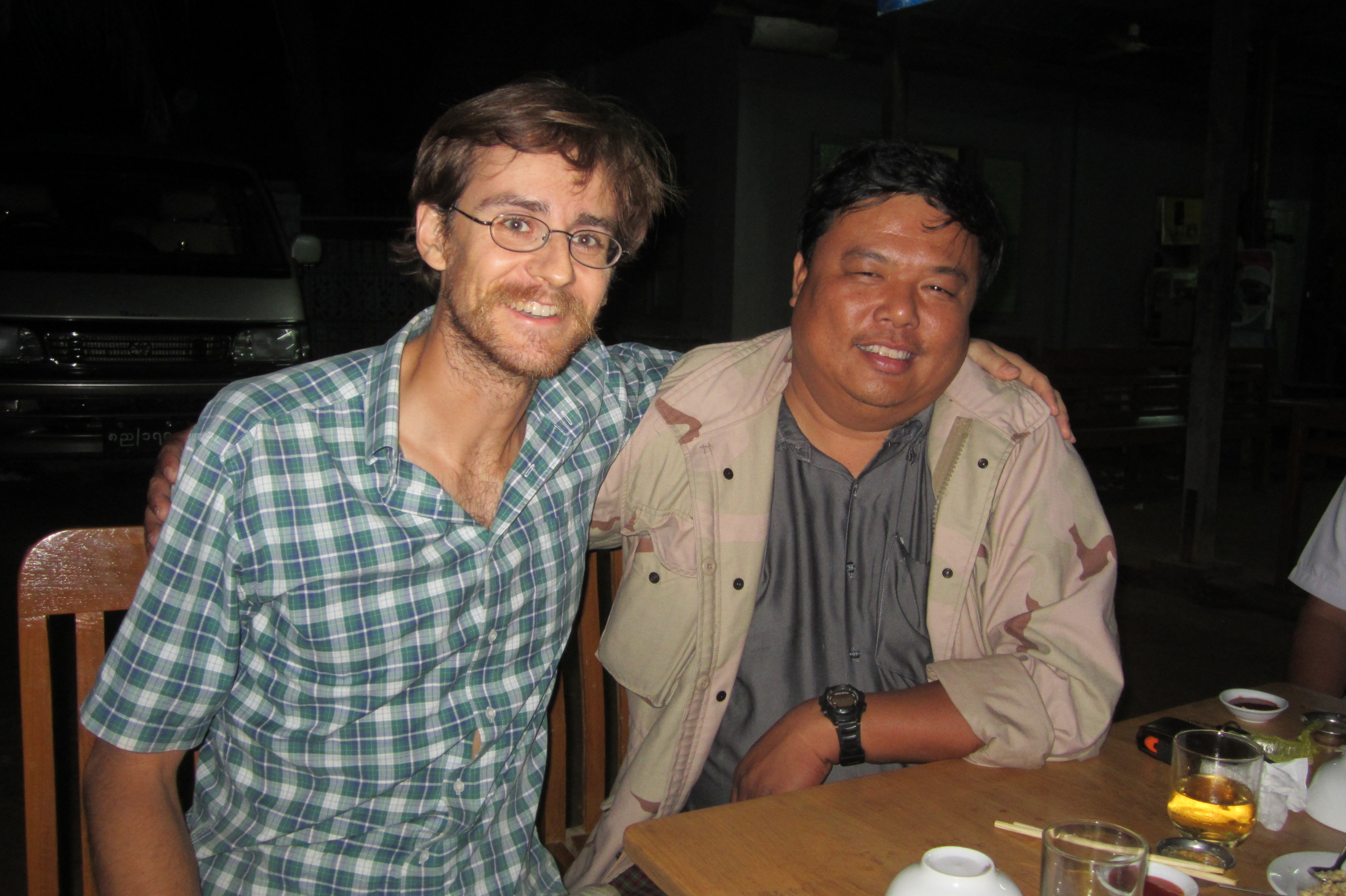
Soesoe and I, a good friend from the University of Minnesota Humphrey School of Public Affairs
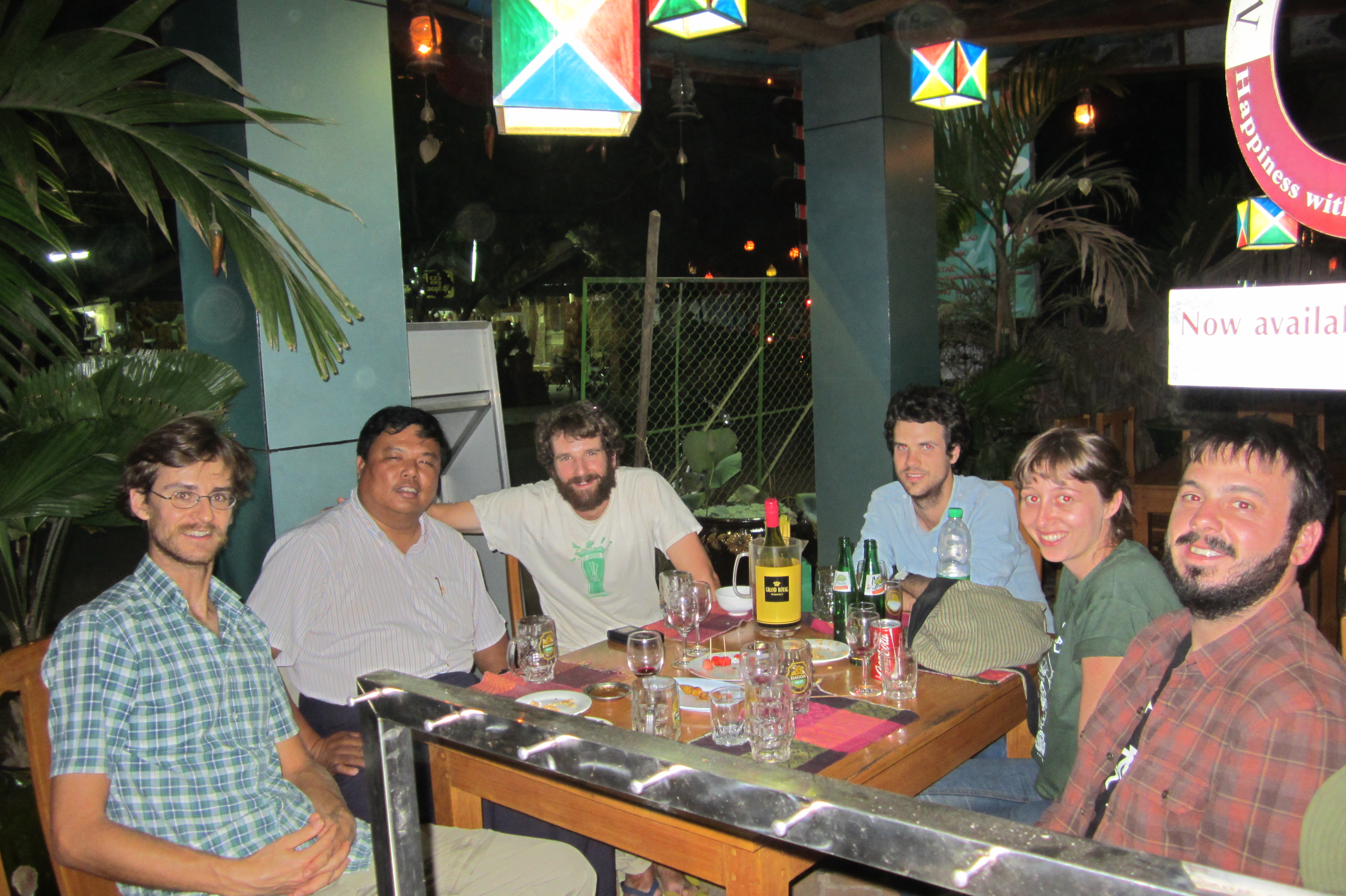
With Soesoe, Steve, Patrick, and I plus two other fellow travelers we met.
After three day’s in Bagan, mostly resting, we caught a night bus back to Yangon.
3) FAQs for bicycle touring Myanmar
1) Is it hard to get a visa?
A: No, it’s easy and took just 2-3 work days in at the Myanmar Embassy in Bangkok, it’s a 28 day visa. We needed to have a flight and hotel reservation in Yangon for our visa application. The hotel deal on the website was a few US$ cheaper than in person AND we could pay for the hotel with a credit card online, but NOT in person, but we COULD use their free computers in the lobby to book AND pay online for additional days. We used http://www.agoda.com and stayed at the cheapest one on the site in Yangon, Hotel 63, US$57 for a room for three including a decent all-you-can-eat breakfast buffet. Hotels that foreigners are allowed to stay in are generally more expensive than elsewhere in SE Asia.
Visa on arrival is even possible if arranged through an agent ahead of time, though we didn’t want the uncertainty. We saw the visa on arrival desk at the airport though with some people lined up. I suggest getting the visa ahead of time to be sure.
2) Can we bike enter Myanmar by land borders or do we have to fly in?
A: Despite the political opening in 2012, land border entrants only get 24 hrs and must exit at the same port of entry. However, Indians, Chinese, and those from other bordering countries, seem to not have this restriction. So, those from all other countries must fly in to stay over 24hrs.
Flying from Bangkok to Yangon was the cheapest way in we found even though we were coming from India, US$250 at peak season, as low as US$100 roundtrip. We flew Air Asia which also has a brilliant straightforward and cheap pre-booking “sports equipment” by kg additional charge, only US$40 for bike fee.
3) Are we allowed to bicycle around the countryside or will we be restricted to busses and special tourist areas and their inevitable higher prices?
A: Yes, flying in with bicycles was not a problem (only US$40 pre-paid for bike fee on Air Asia from Bangkok) and biking around much of the country is OK. Although we could bicycle outside the main tourist areas, foreigners are required to stay at hotels registered to host foreigners. This means that inevitably at least once, bicycle travelers will probably wind up in a town without such a foreigner hotel and be forced by police (friendly police thankfully) to hire a pickup truck to drive to the closest town that has a foreigner hotel. It happened to us once and the nearest hotel was 16 miles away (Myittha town does not have a foreigner hotel, but Kyaukse, 20km north, does).
4) Will we be stopped at checkpoints and turned back?
A: We read on other blogs that this can happen if the road is entering a foreigner-restricted area. But it didn’t happen to us on our route between Inle Lake and Bagan.
5) Can we camp?
A: Other bicycle travelers said we could so long as we set up after dark away from villages. We didn’t camp because we didn’t bring our sleeping bags from Thailand, thinking it’d be too hot. But we found that Shan State (near Inle Lake) has cold nights because of its mountainous and elevated terrain. There were plenty of great camping spots in Shan State though. You would need to buy food for dinner in market towns where you slept the night before. Also, camping would have saved us from a few long and late days of biking 80-90kms, though would have messed up our schedule of hitting towns with foreigner hotels a bit.
6) Could we be arrested for camping?
A: Bicycle travelers told us no. If the police found us, they would probably just escort us to a hotel or make us rent a truck to take us to a foreigner hotel.
7) What’s this talk of foreigner hotels and having to bring in all one’s money in US$?
A: Despite very very new ATMs as of fall 2012, we only successfully used the one at the airport (which does take Int’l Visa and Mastercards). Although a few other towns on the tourist track have ATMs, they often are turned off and if ever turned on, are only on during certain business hours.
So, most people still bring in most/all of their money in perfect crisp and clean US$. Most will not accept folded/non-perfect bills, so keep them in your money belt. Hotels accept payment in US$ and can also exchange for Chet, which restaurants and merchants accept. We used mostly 20s and some 50s and brought US$600/person for our two weeks, which was ample. This has been standard practice for foreign tourists in Myanmar for decades, and it IS safe to do so, but use a money belt and put a spare stash somewhere else in your bags.
Hotels are often more expensive than the rest of SE Asia (average US$15/person), but food is cheap like other SE Asian countries.
4) Our journey through photos
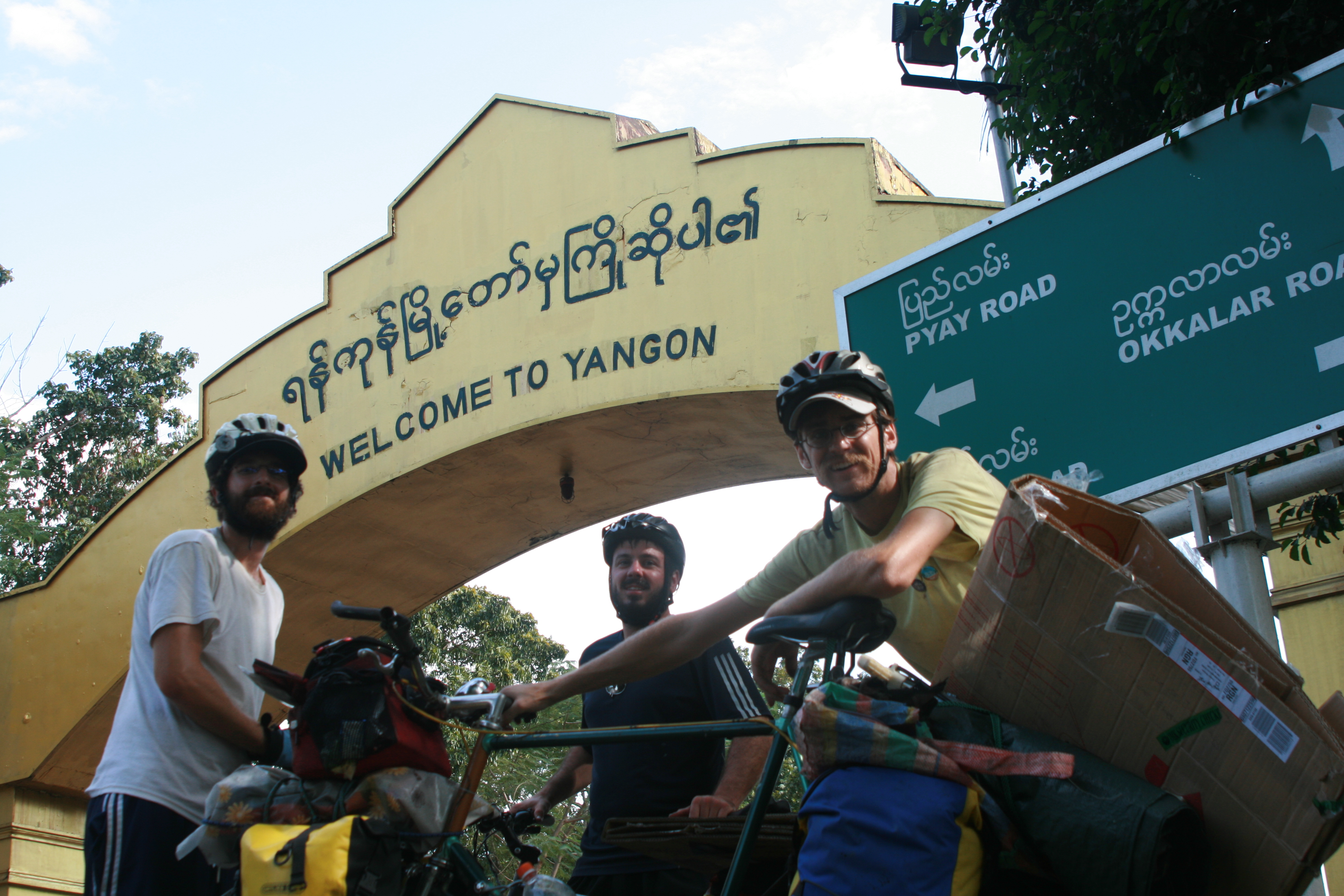
Biking into Yangon from the airport – a pretty comfortable 20km ride on non-highway roads surprisingly nice compared to what we expected.

Our first and one of our favorite meals in Myanamr, on the north side of the People’s Park on our ride in from the airport. Included slow roasted veal, something I’ve never seen outside of the US. It was one of our cheapest meals, the rice and soup was free, we just paid for our meat choice and a vegatable side. Total was just over 3,000 Chit (US$1 = 800 Chit)
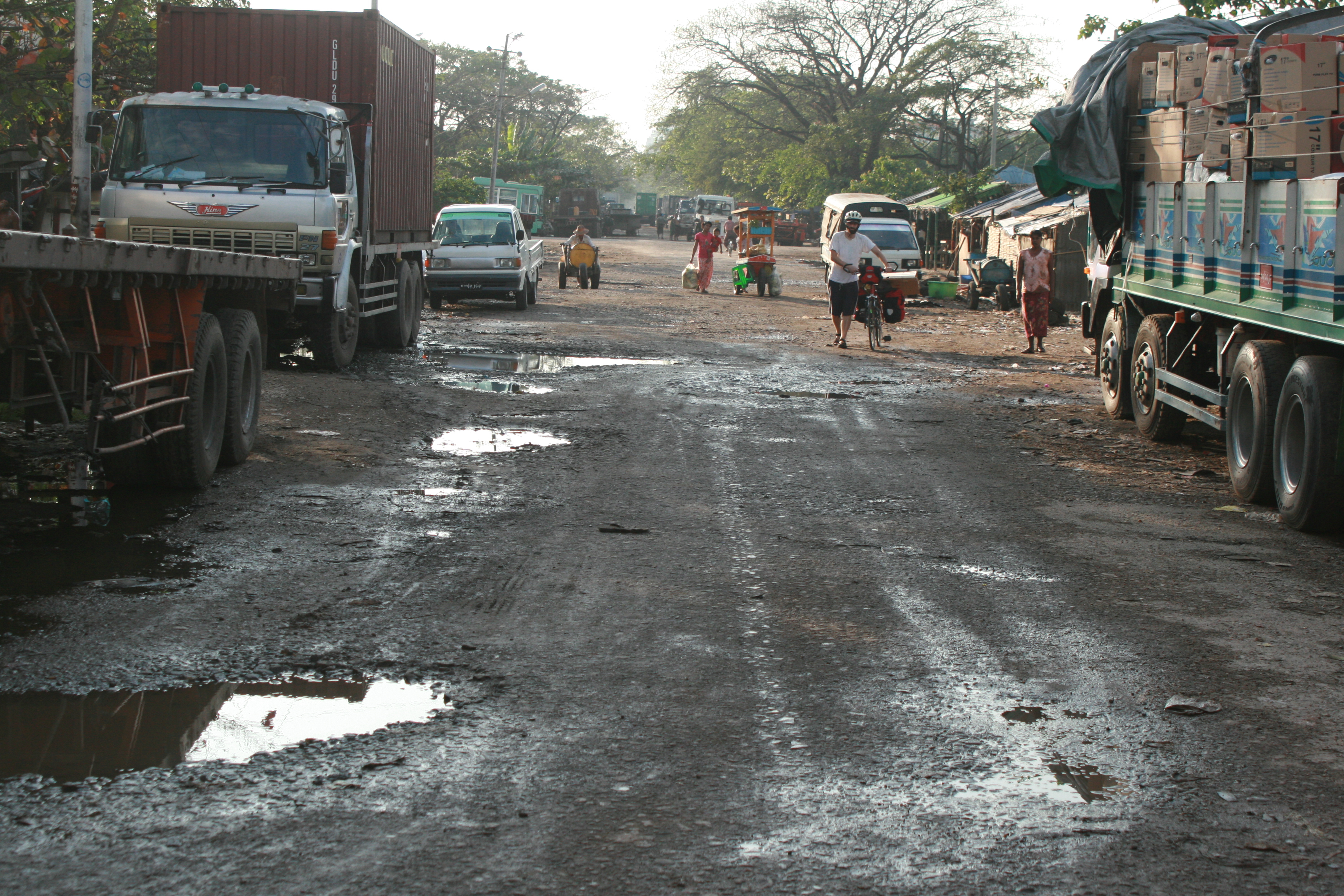
Tucked away in the far southeast corner of Yangon, Hotel 63 is a great value with an amazing breakfast buffet, though is located on a rough road with parked trucks from the nearby port.
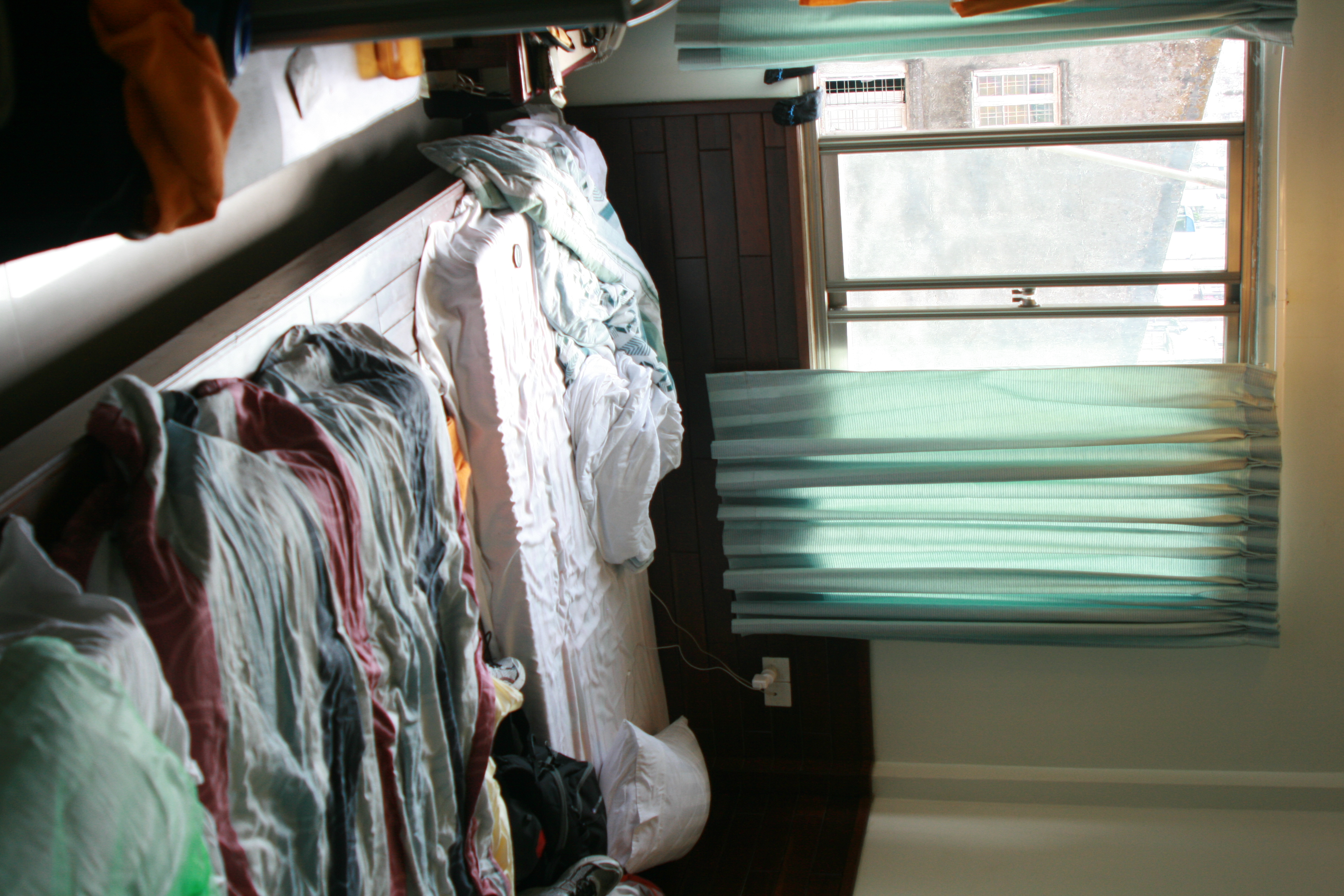
Hotel 63 room for three (fancy for FBR, total US$60/nights)
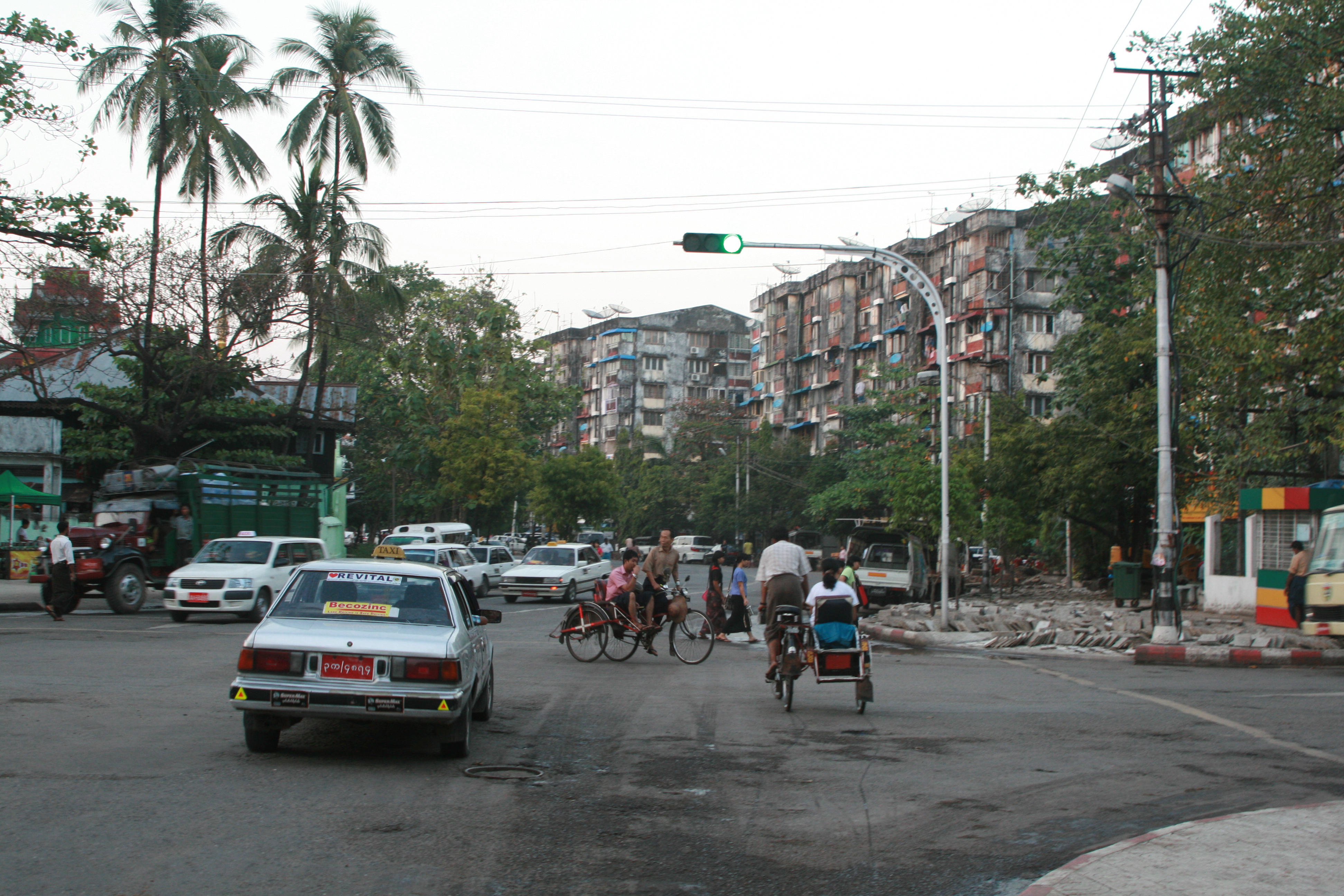
Biking around Yangon – reminiscent of third-tier Chinese cities, but with less people and chaos
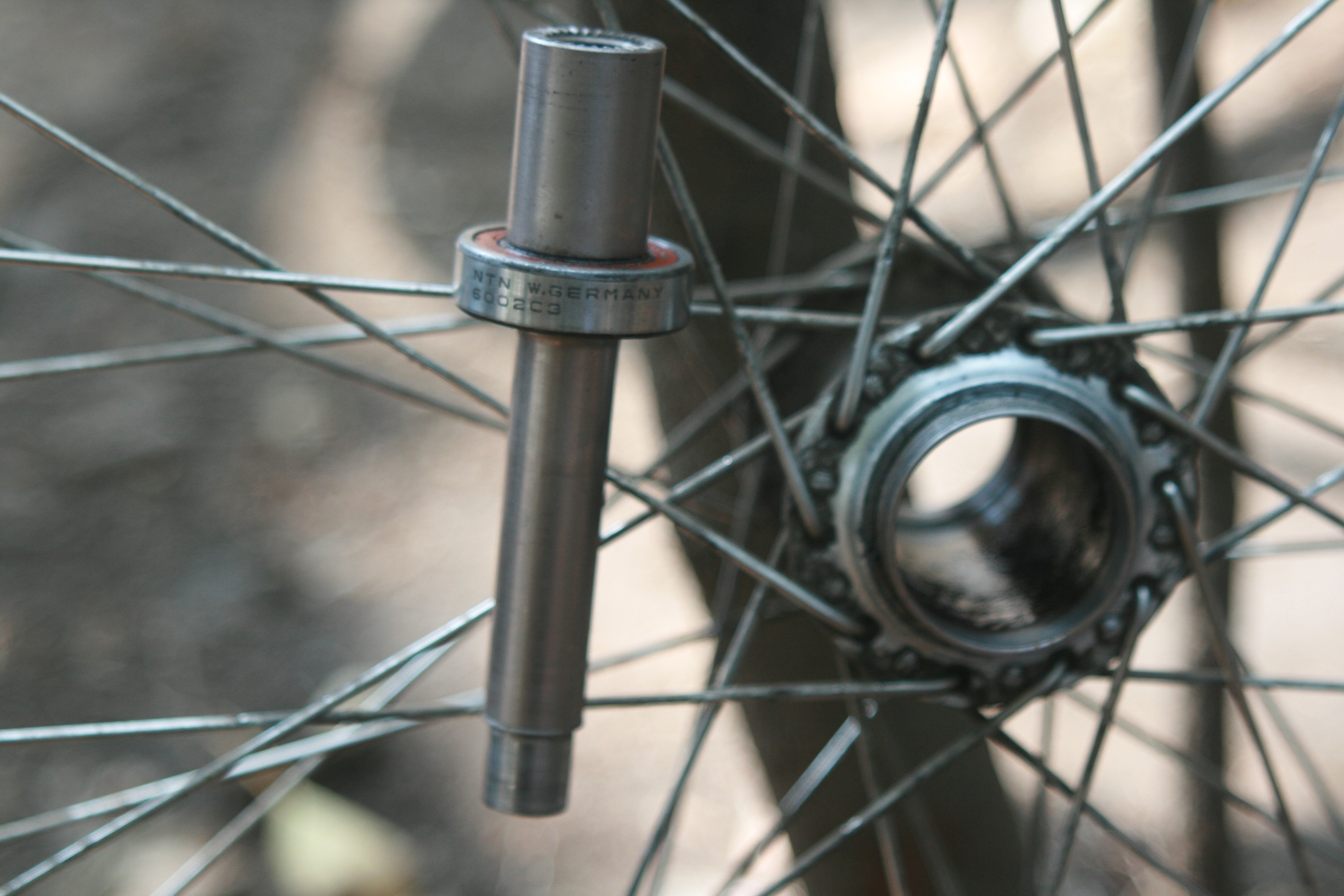
Replacing a sealed cassete bearing on my rear wheel – NOTE: the other side that is still good was made in WEST Germany (6002 size). The one that failed was a Chinese bearing I replaced 10,000km before on the first trip in Bangkok. I received this bicycle as a gift from a priest friend in Minneapolis. It was custom built in 1985.
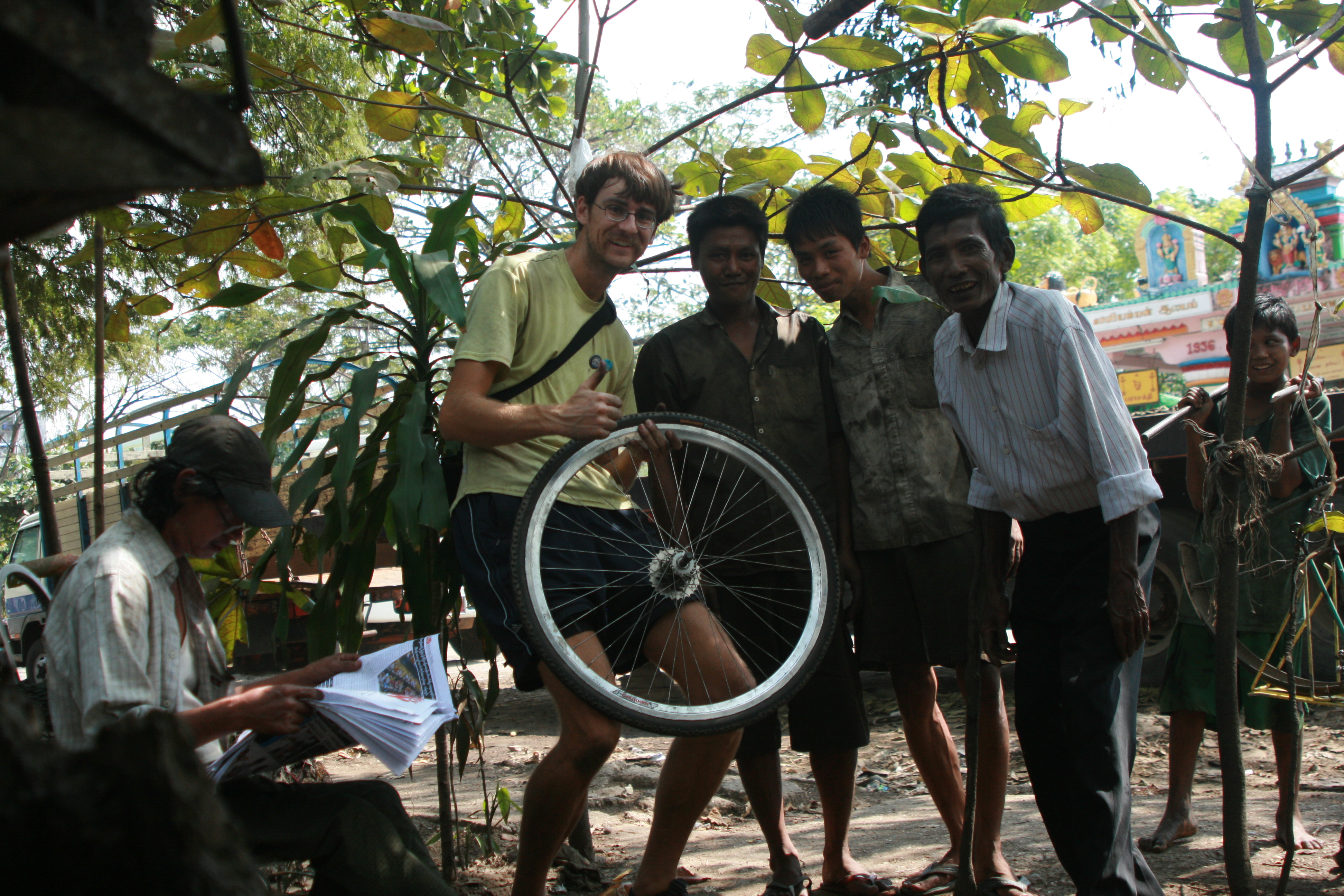
Yangon – These friendly mechanics not only helped me take out the old bearing, but one of them went to get a new 6001 bearing for me. Thanks!
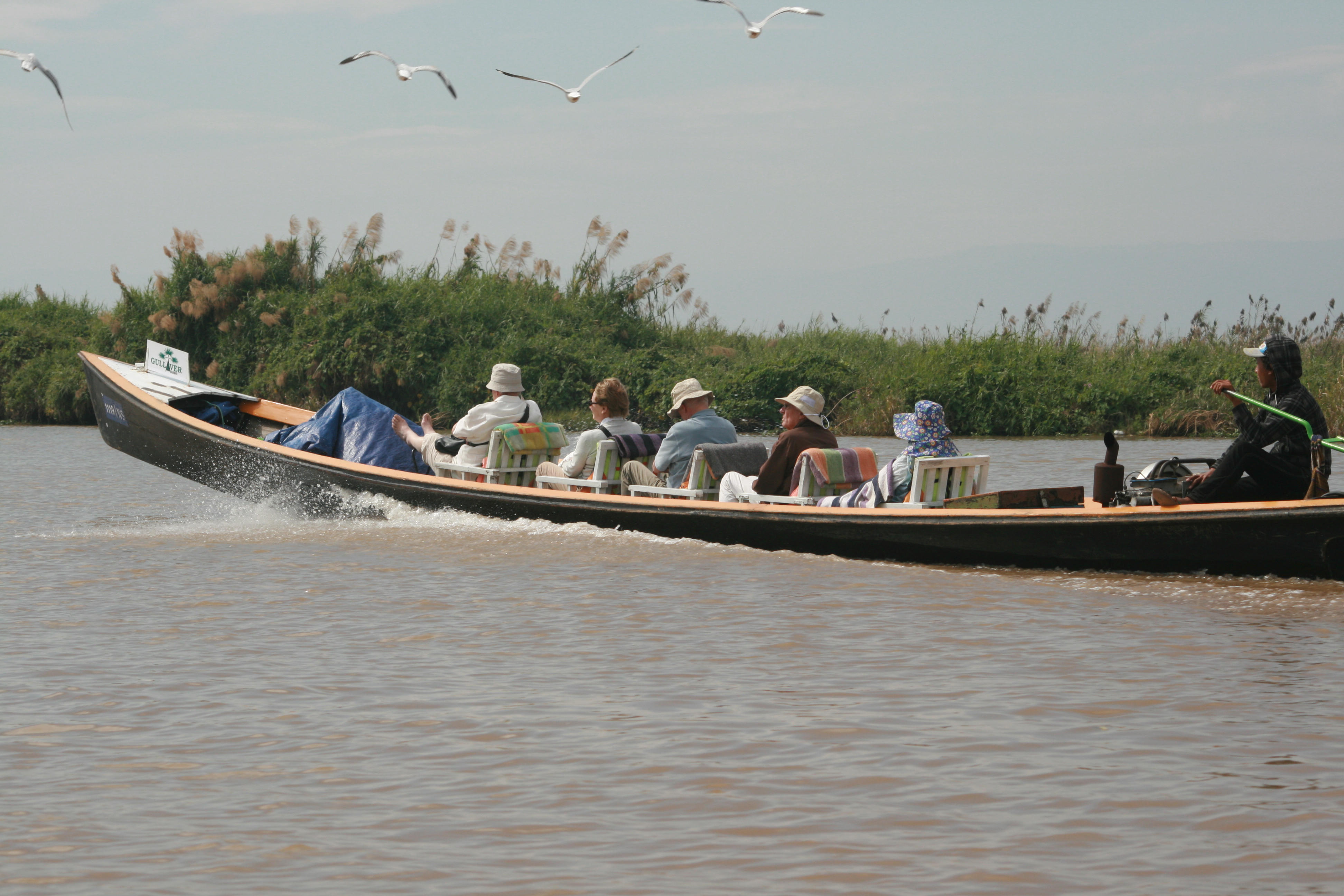
No Illusions. Touristville: Myanmar’s famous Inle Lake
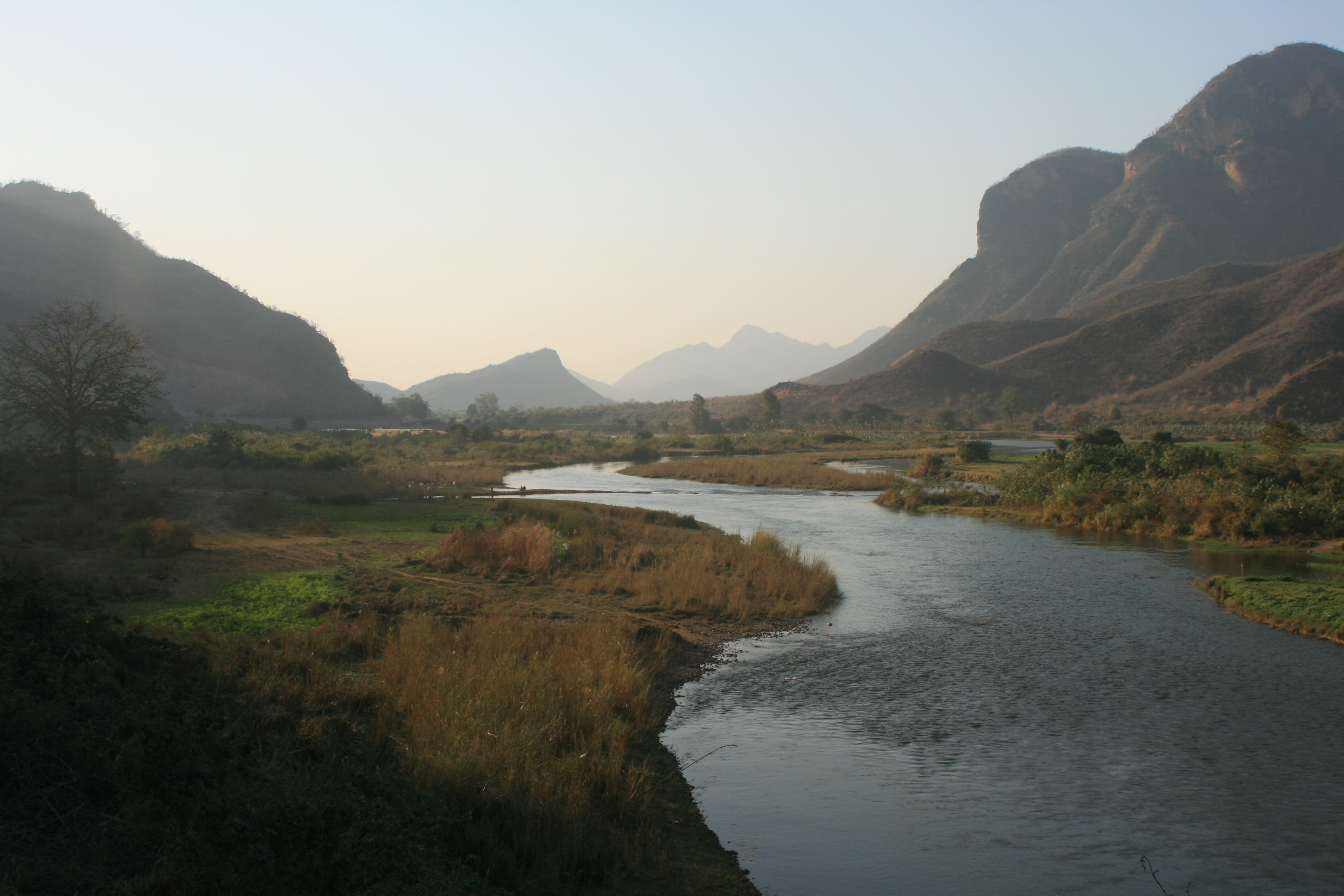
One of the most beautiful scenes we came across shortly after making it into the Mandalay valley
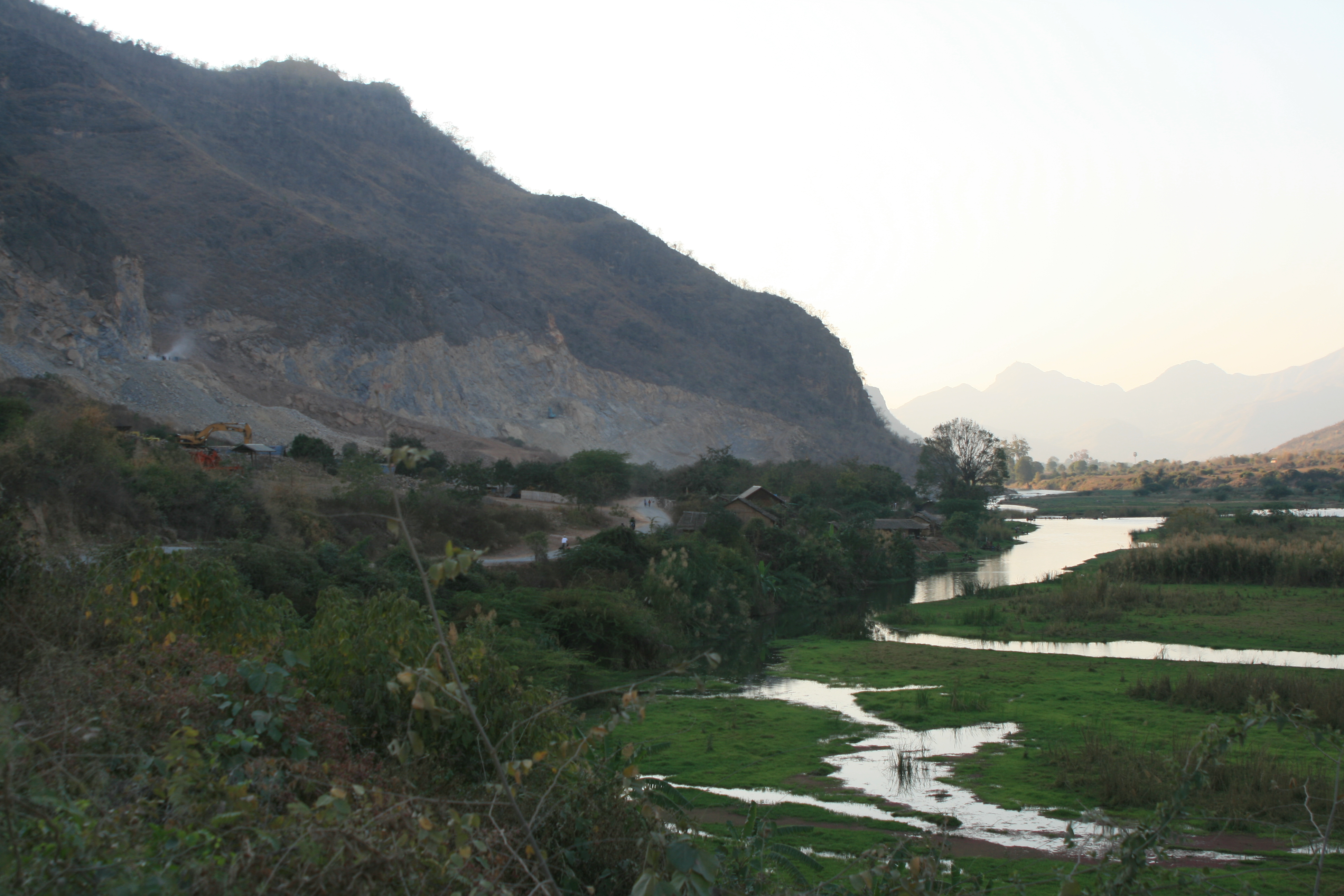
But just to the side of it were human scars of quarrying
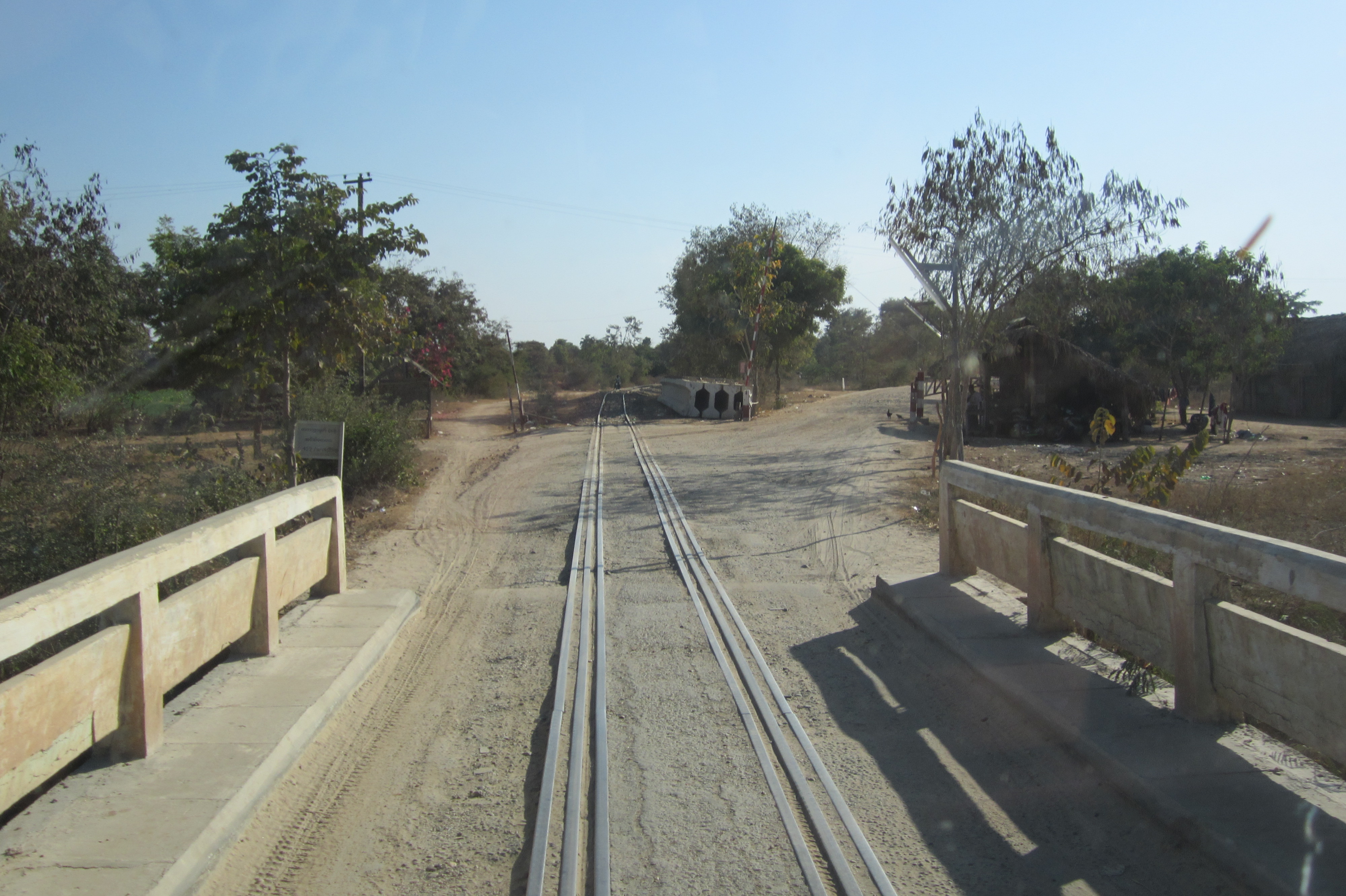
National Hwy 2 heading towards Bagan – a shared bridge for train and cars! Never seen this before.
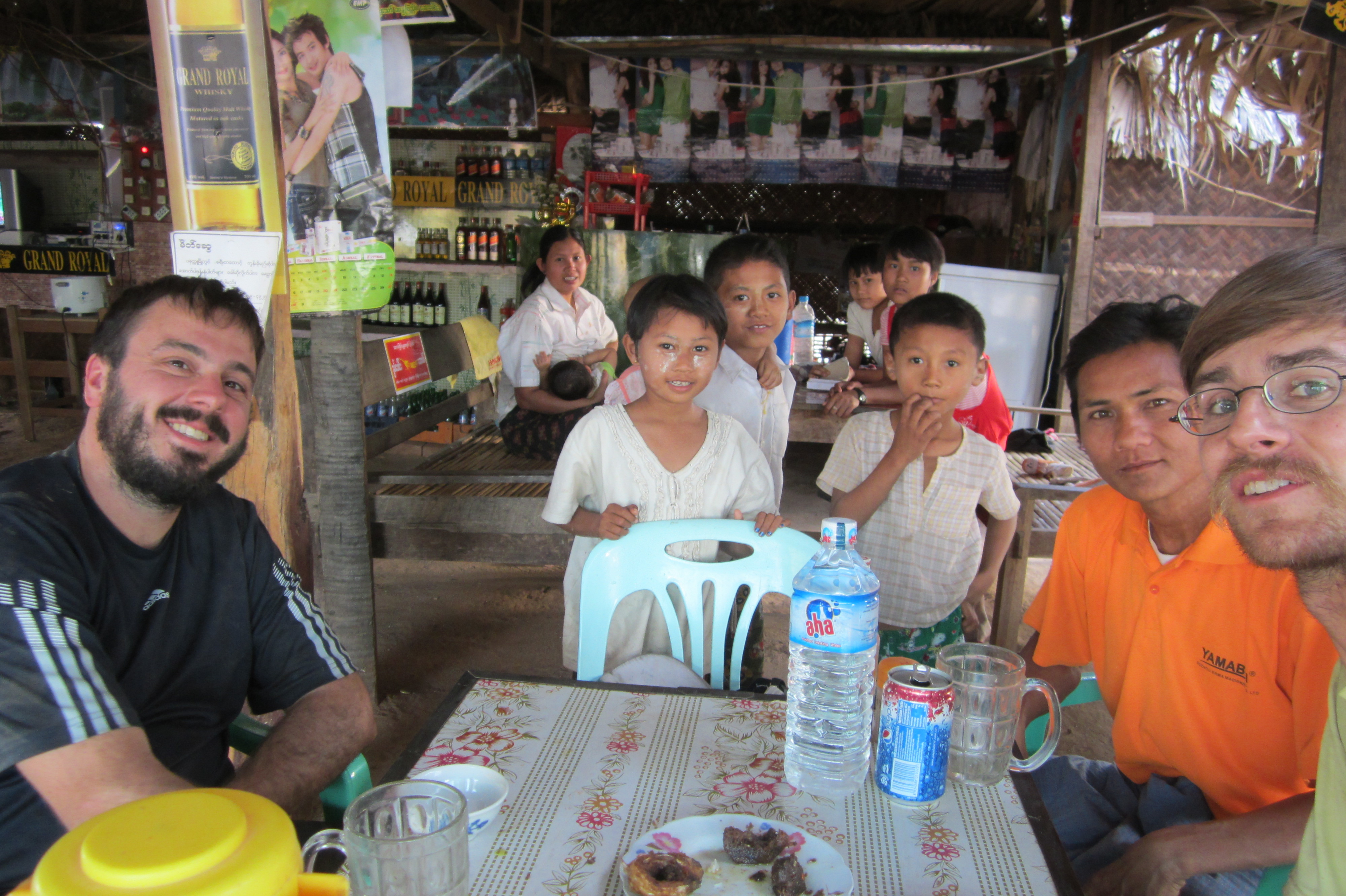
With our late lunch host and his kids after we were dropped off by the truck on Hwy 2. He offered to host us, despite the risks, but Patrick and I had promised to meet Steve in Bagan. Thanks for the offer!
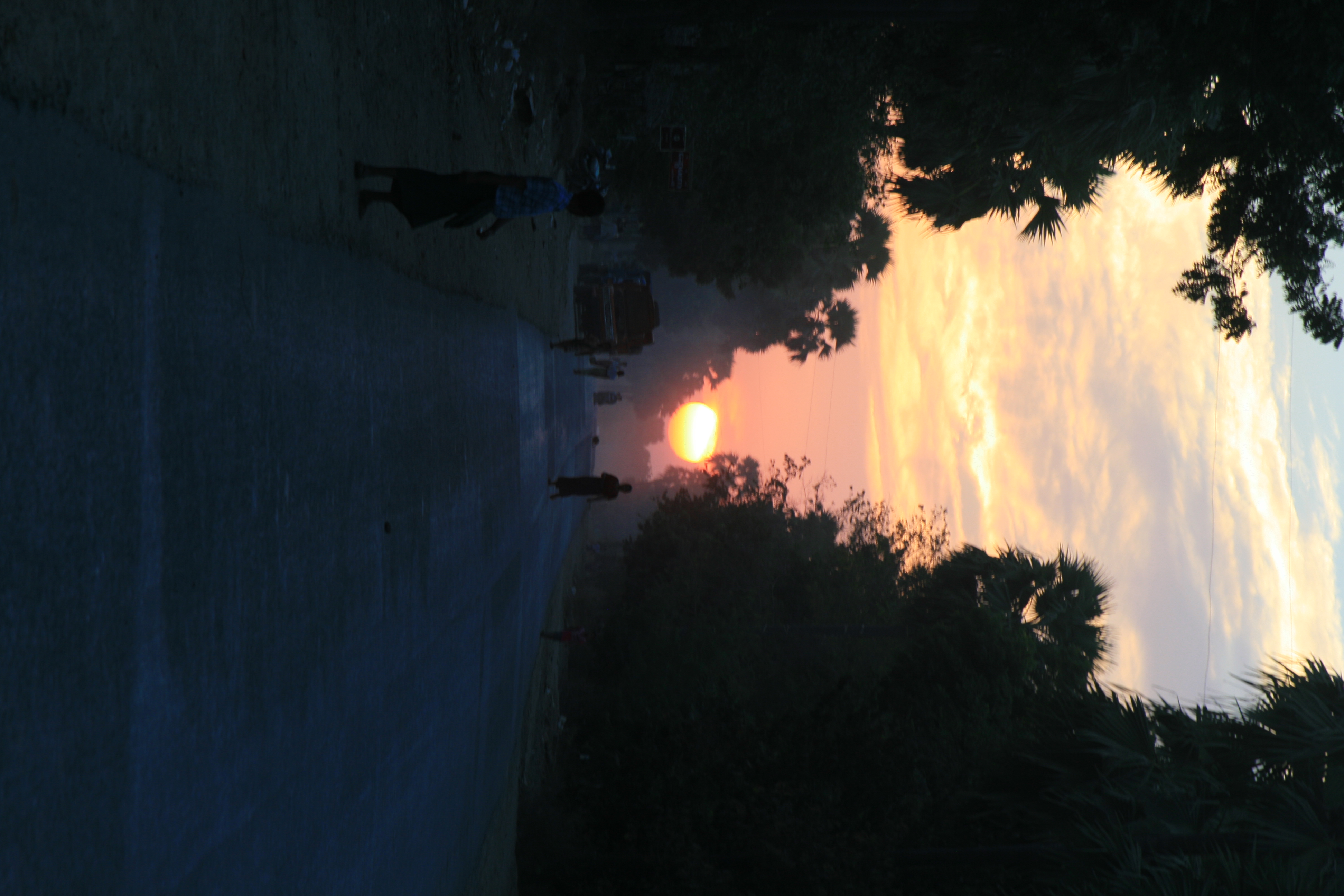
Riding into the sunset towards Bagan on Hwy 2
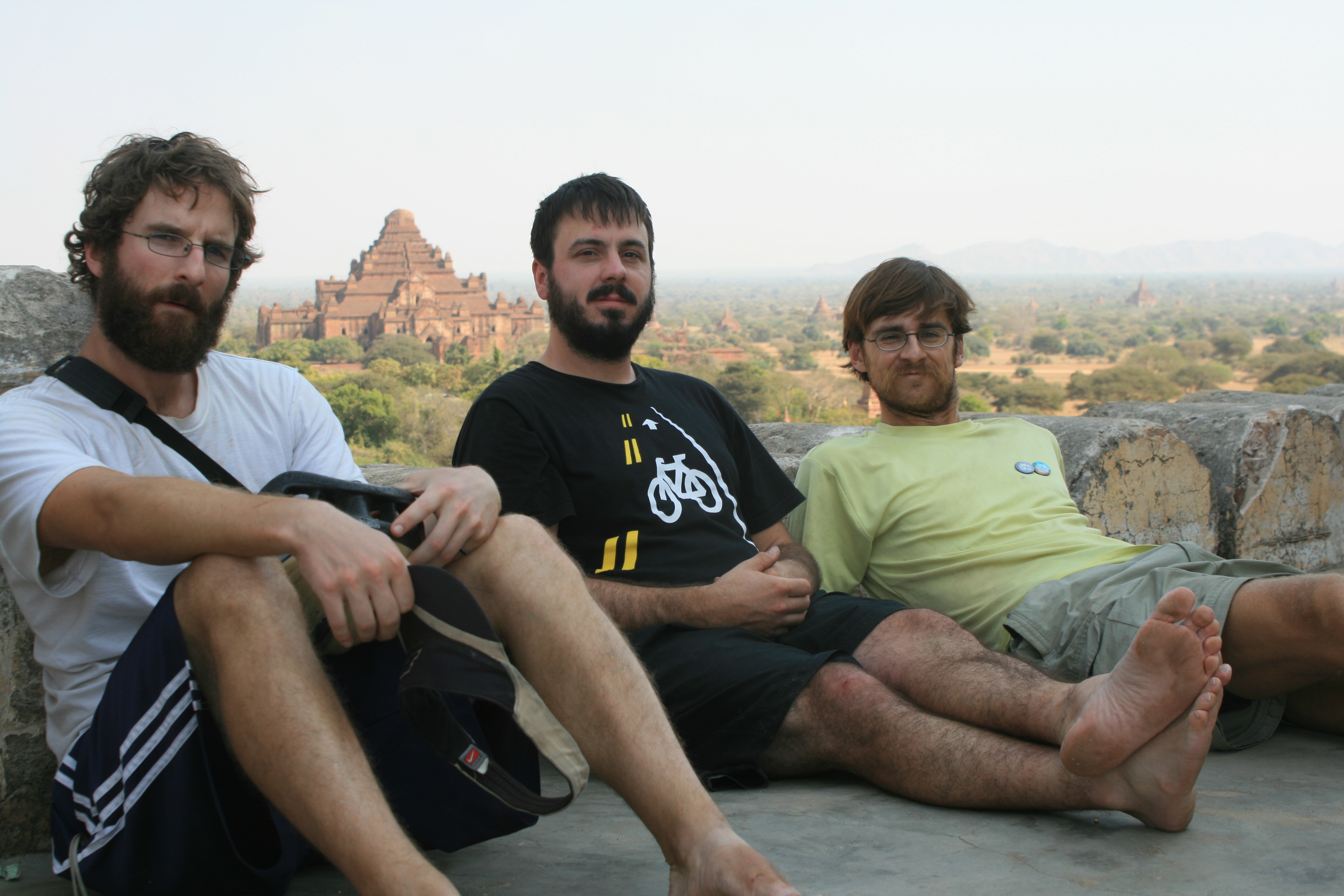
Bagan with the boys – Steve, Patrick, and myself, Peter

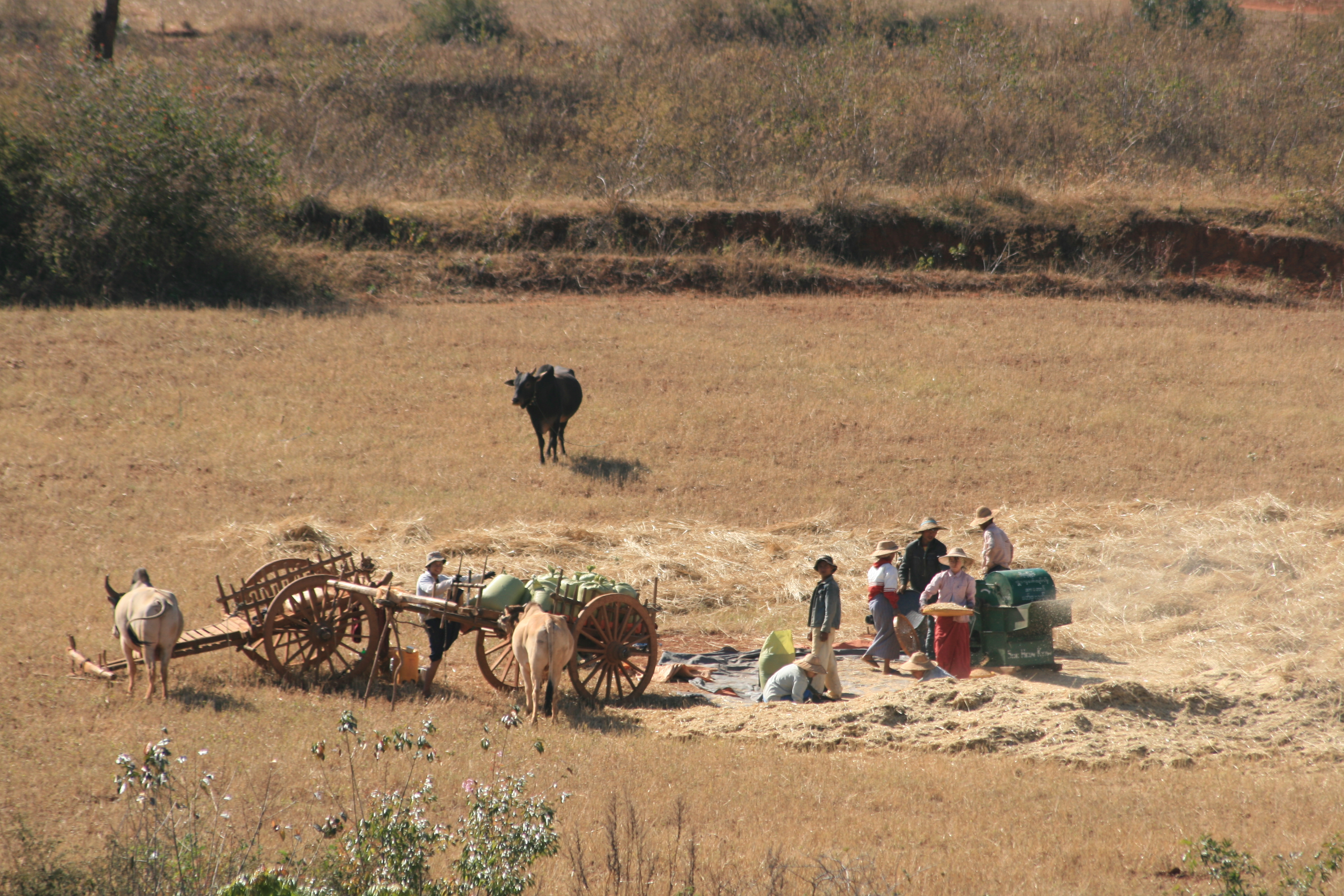
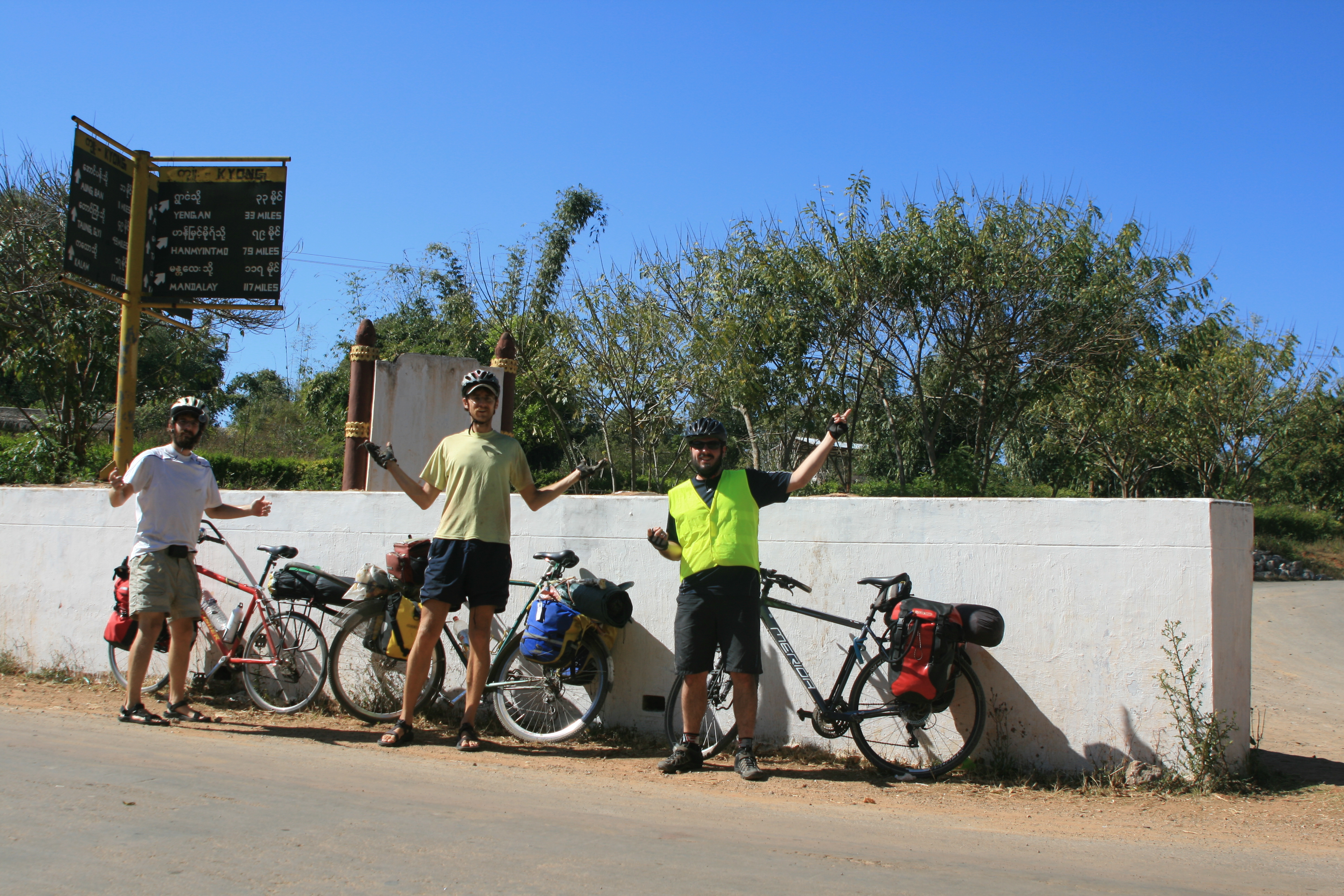

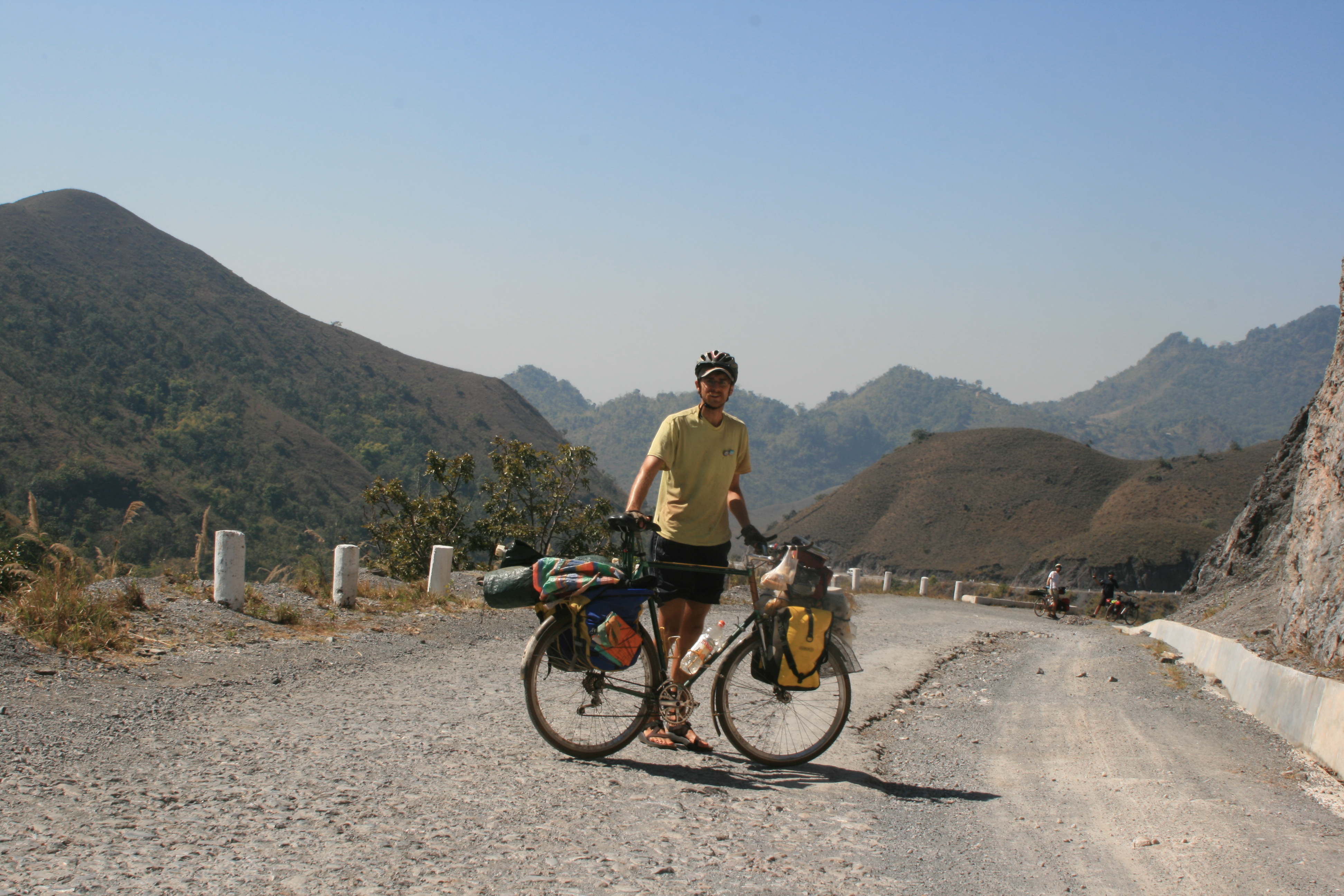
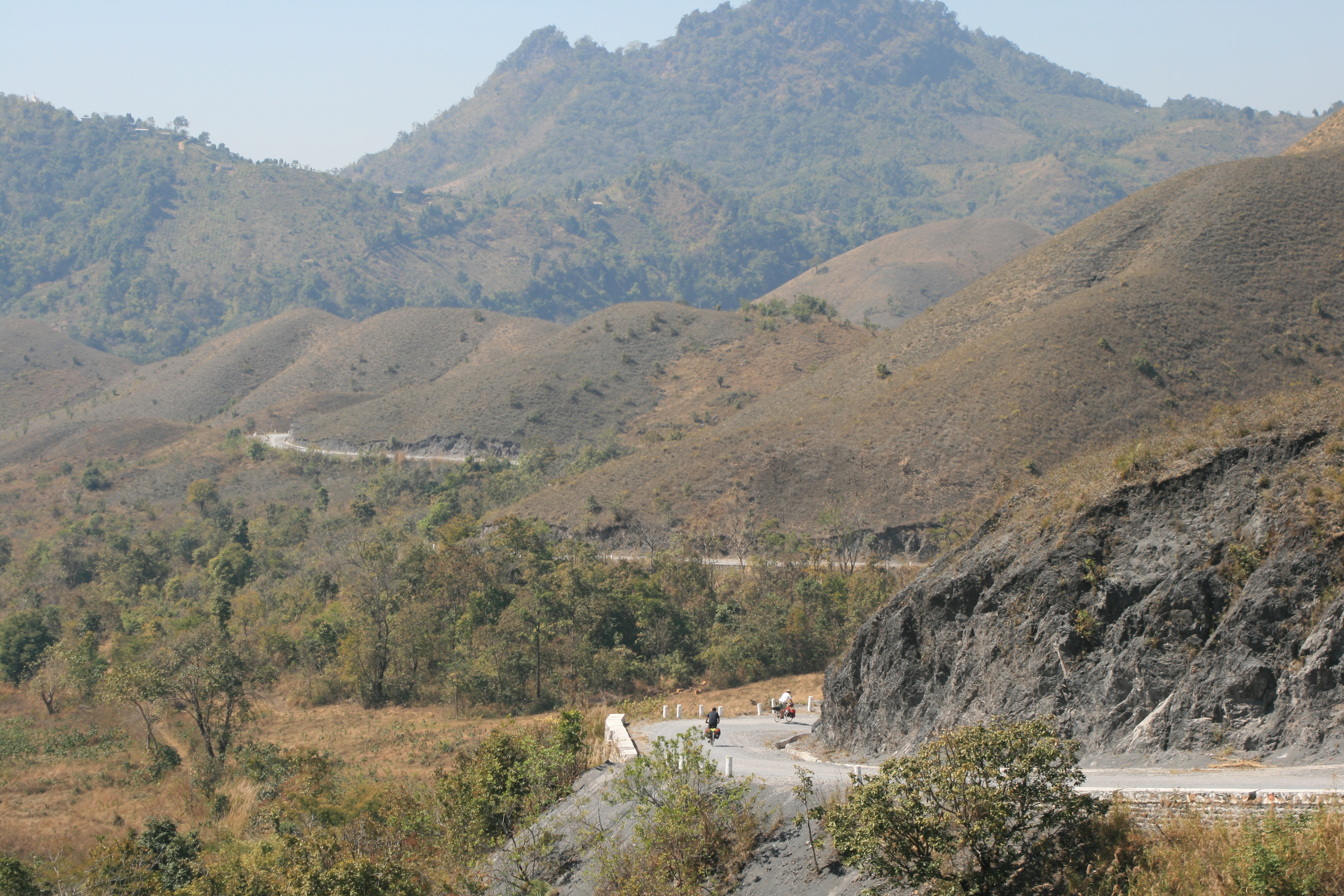
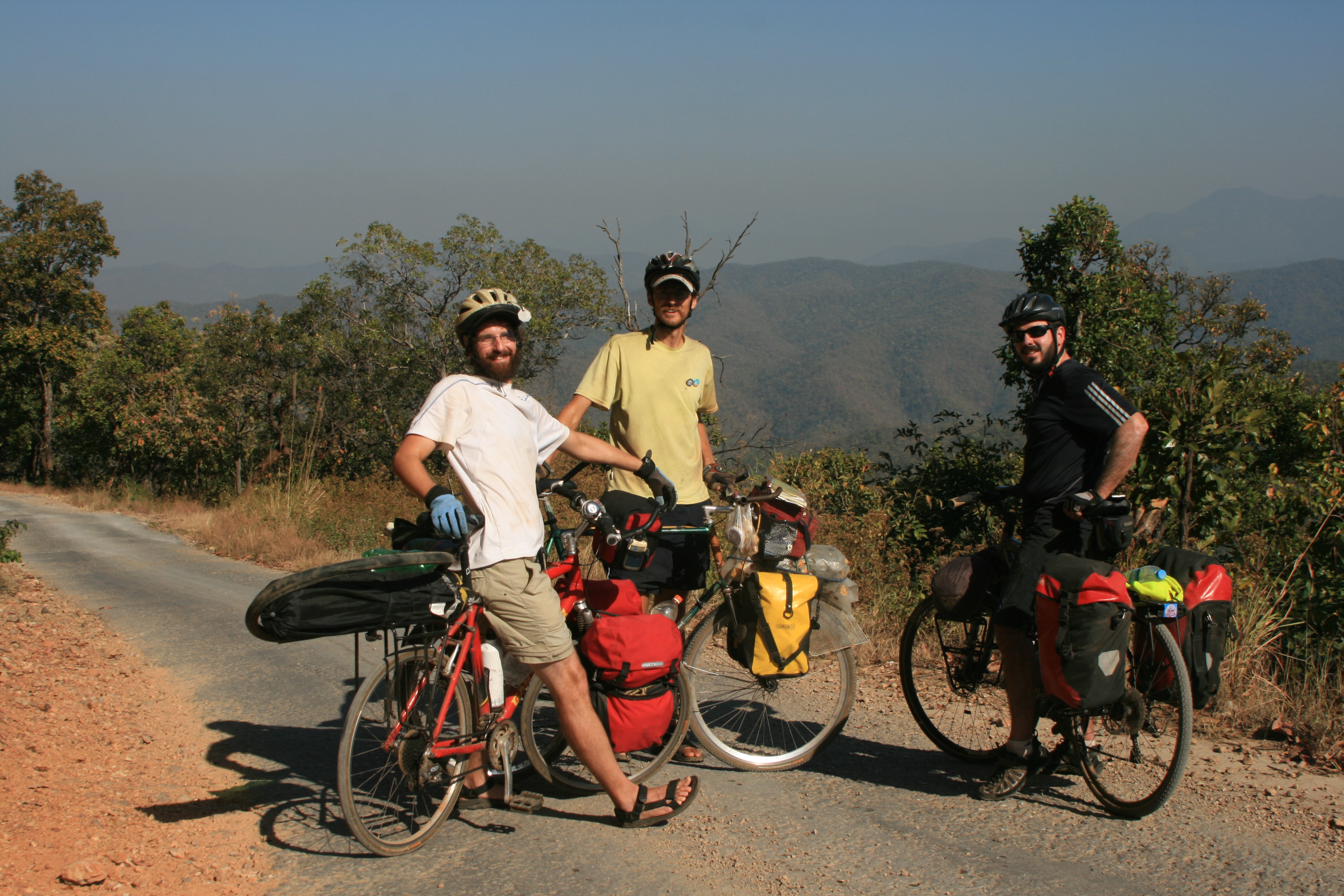
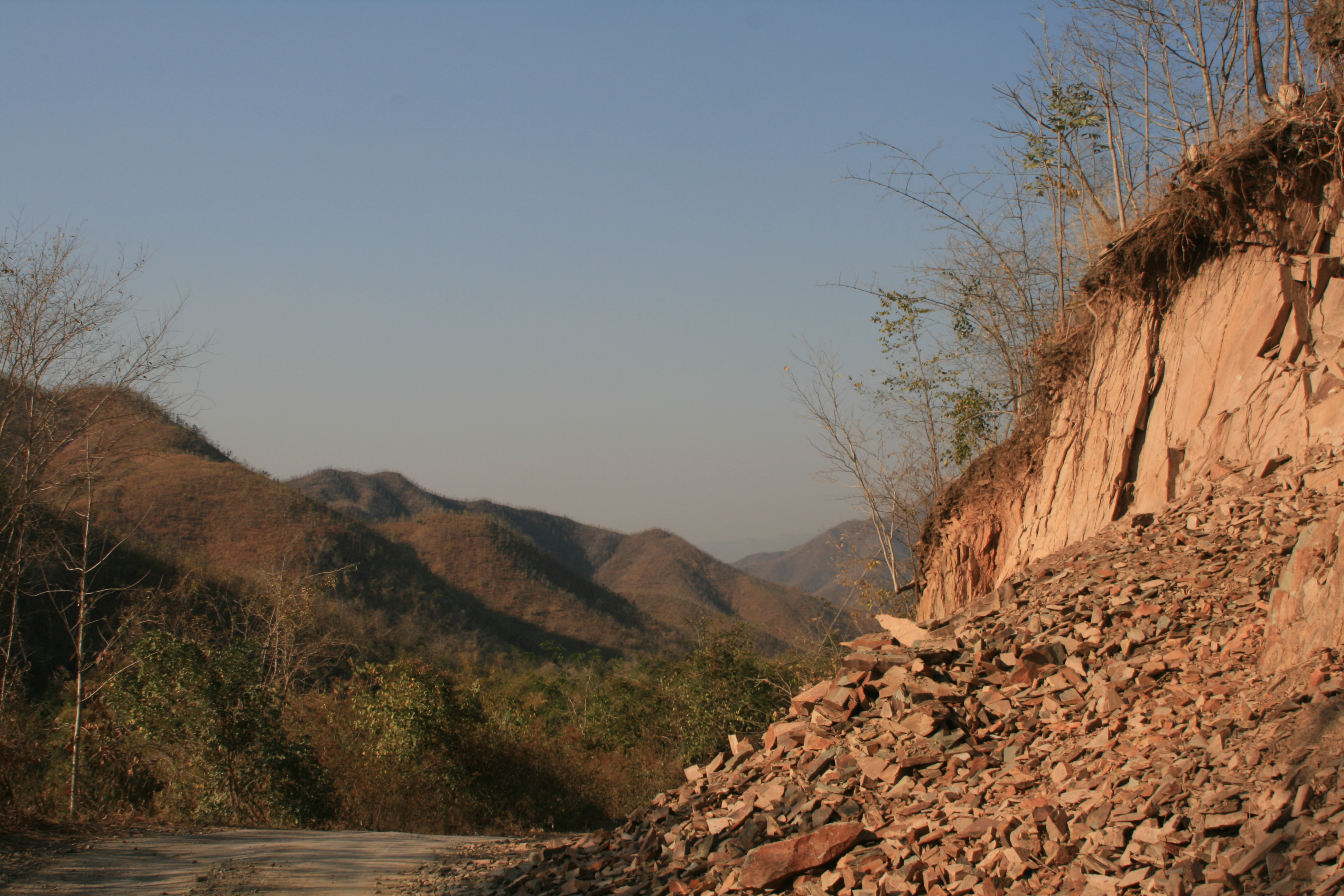
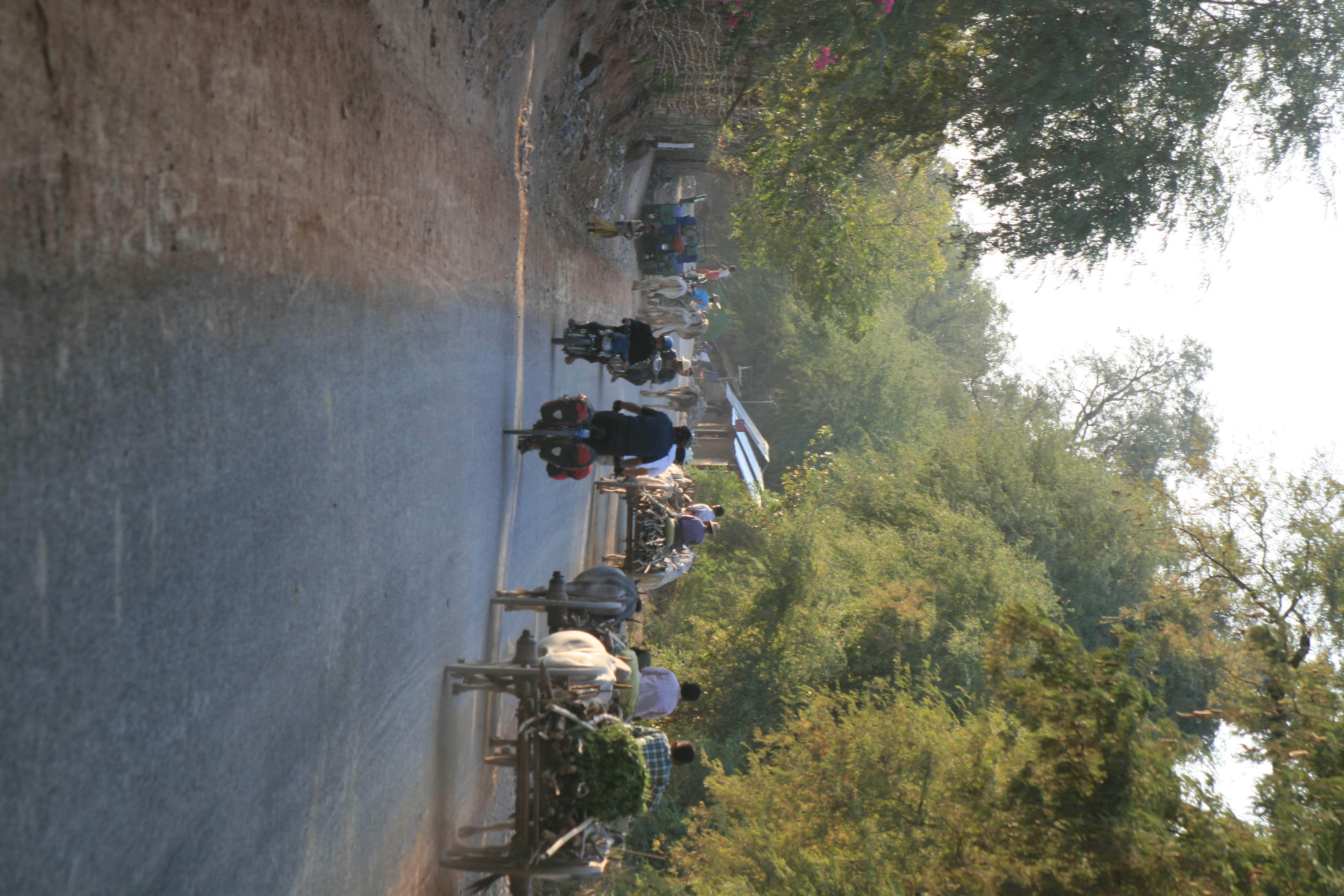
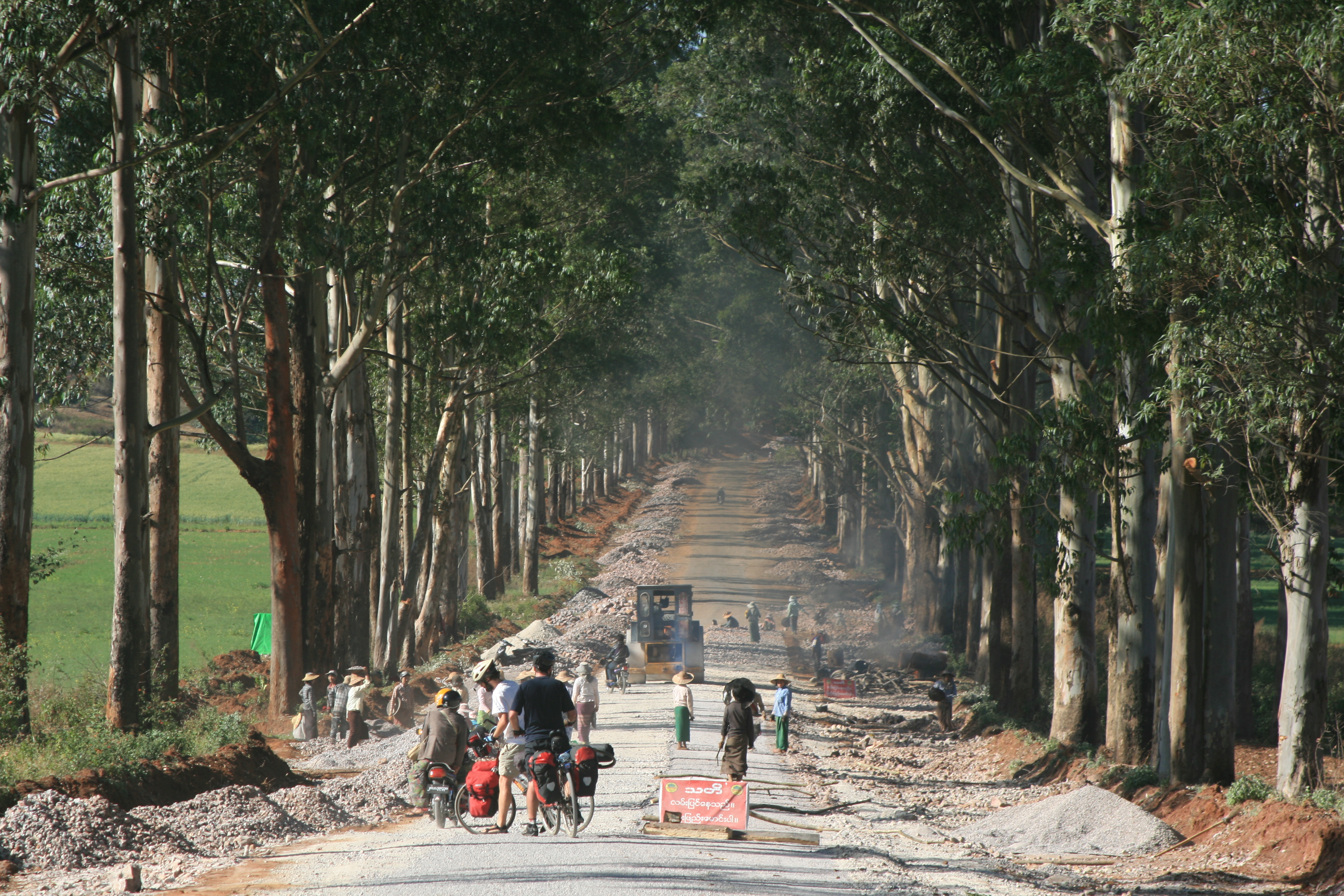

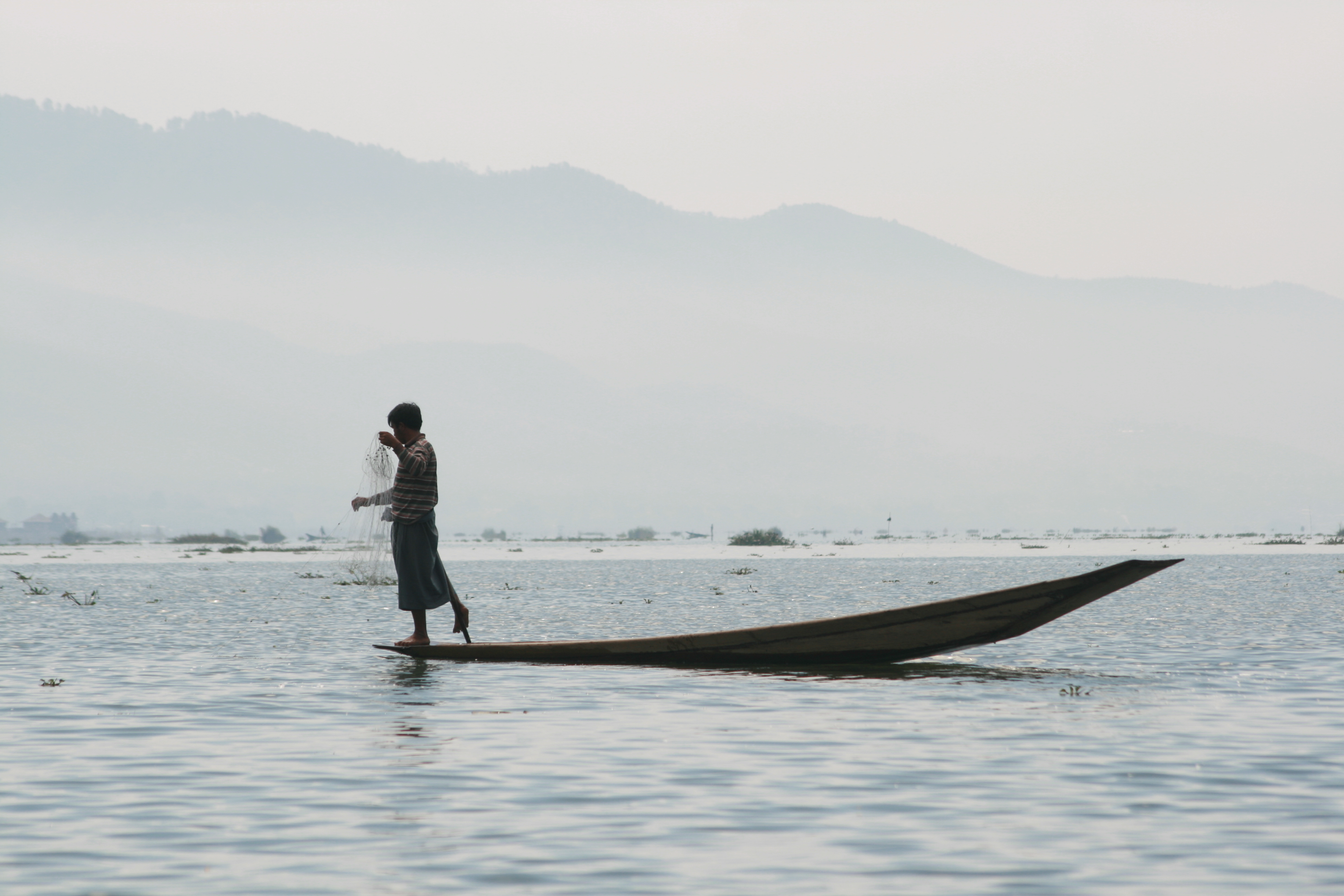
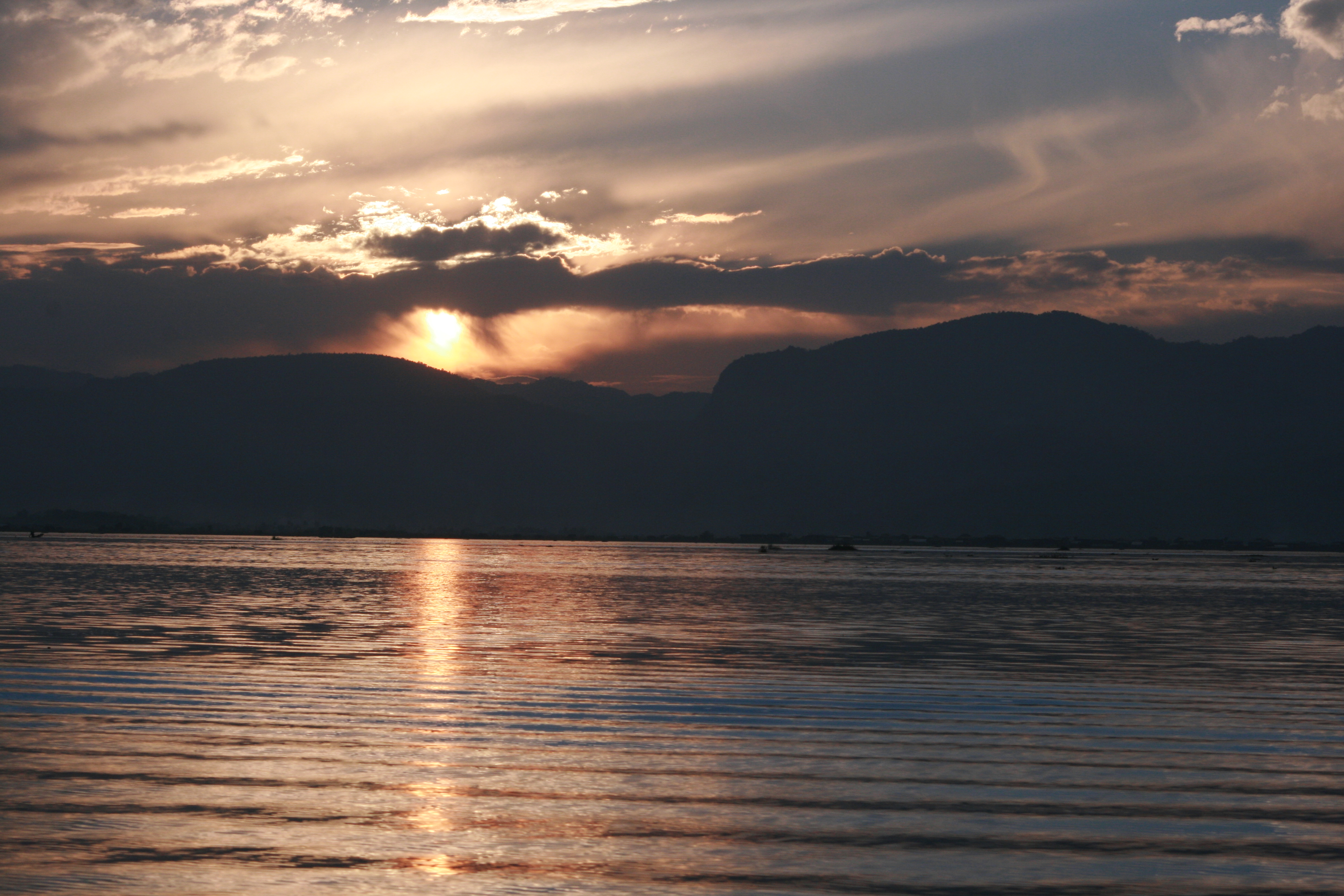

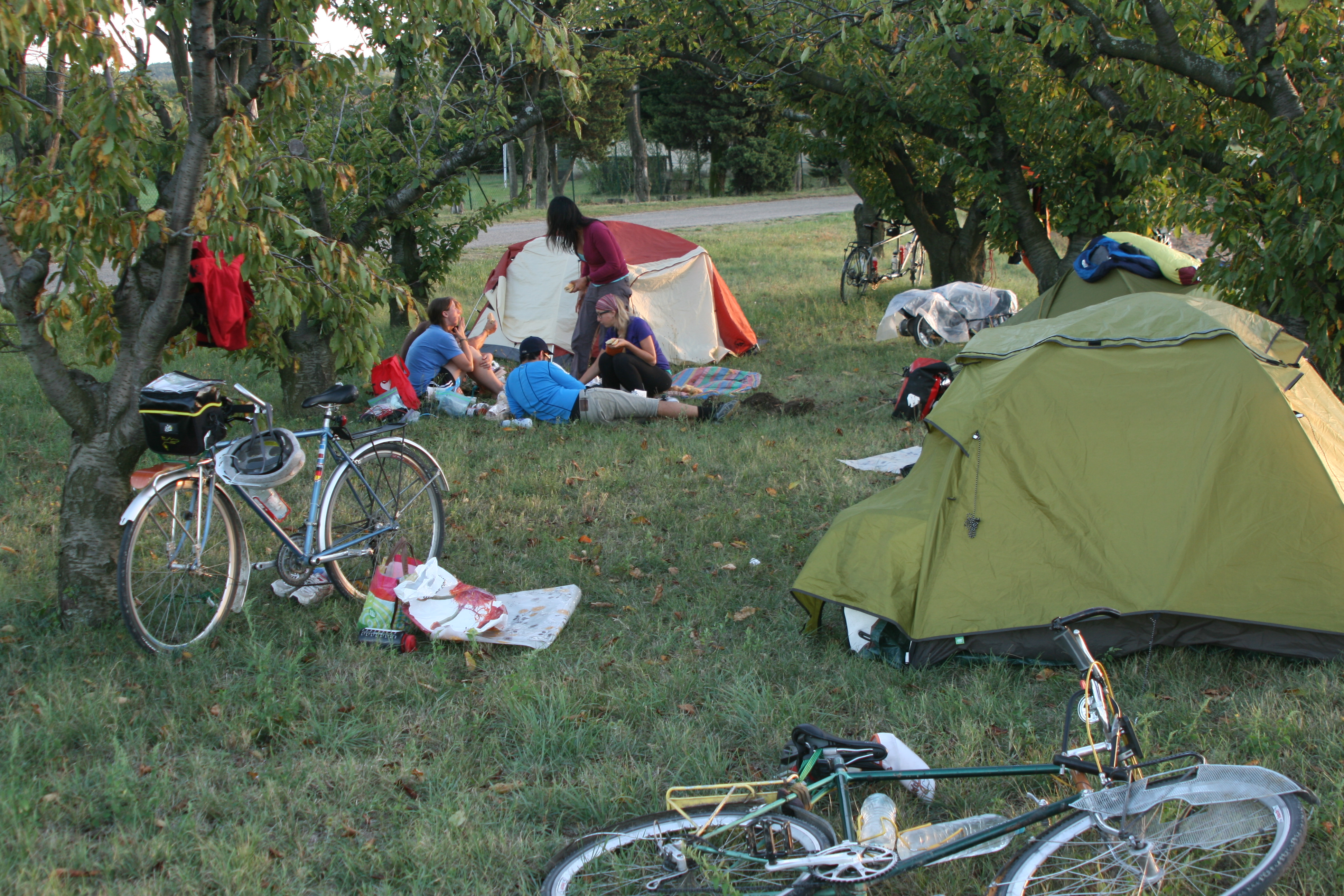
![[35] 1- 28x42 cm (Peter Ehresmann)](http://farm5.staticflickr.com/4134/4755251928_a274fc08bb_o.jpg)
